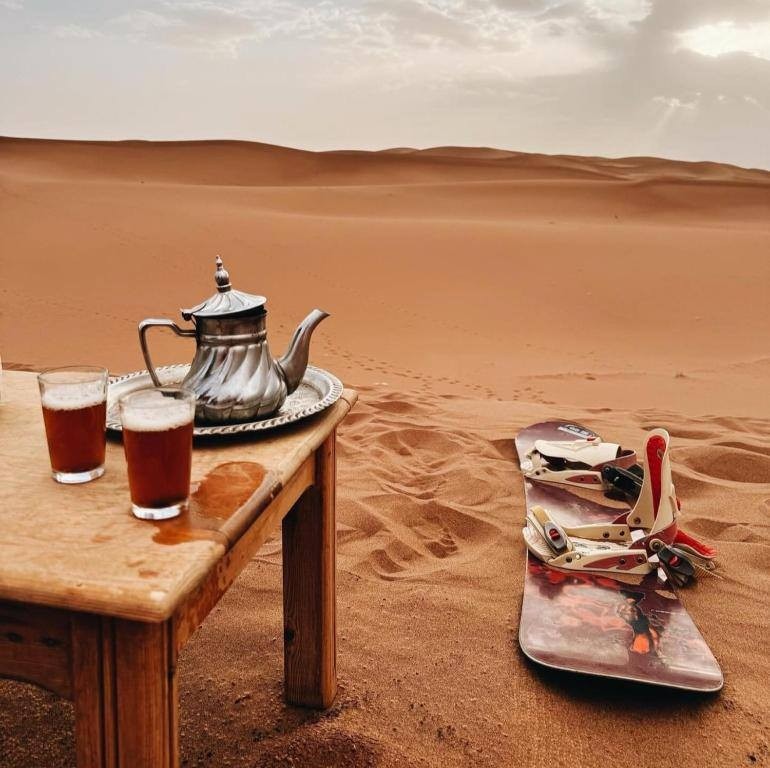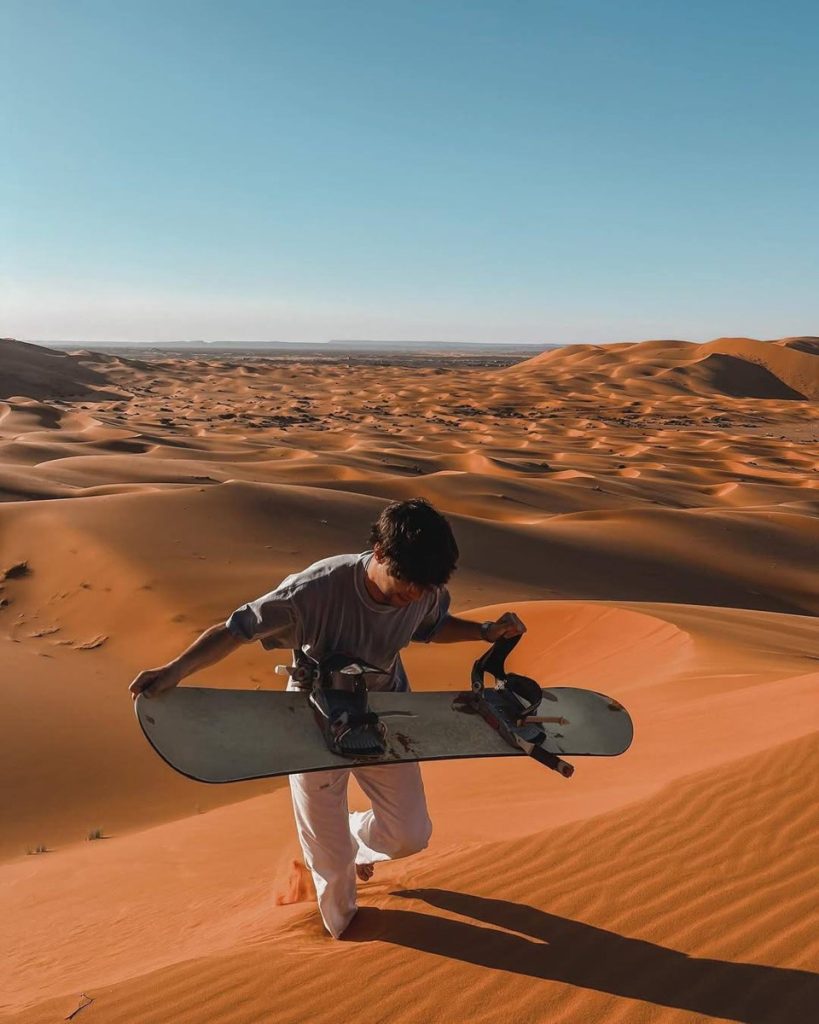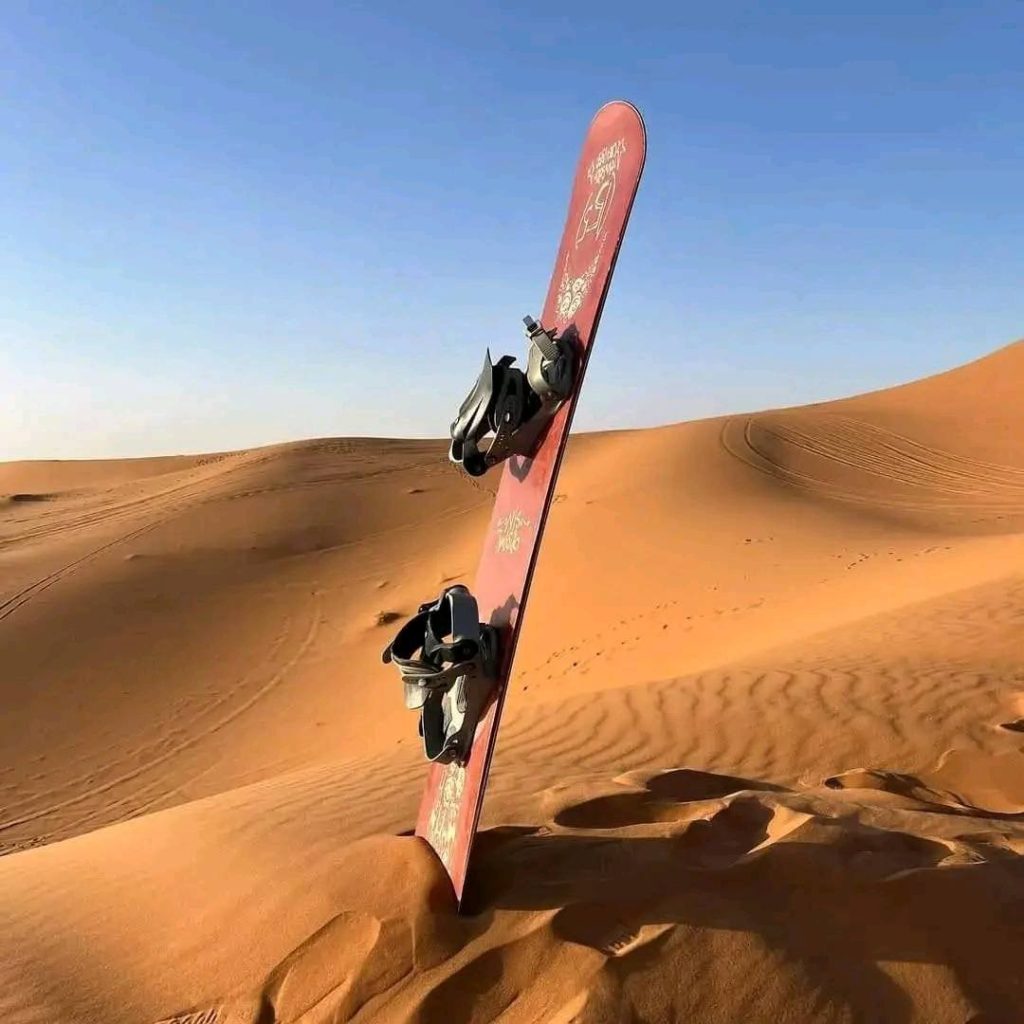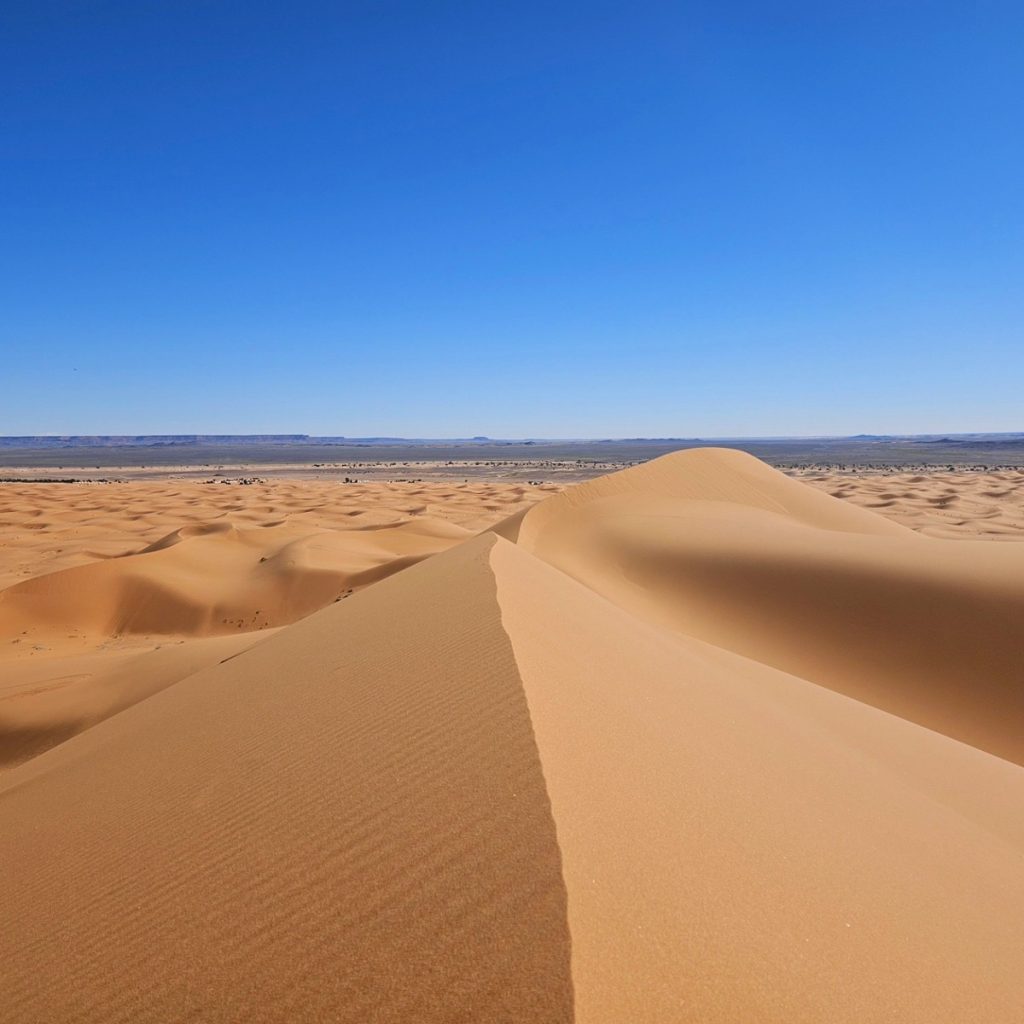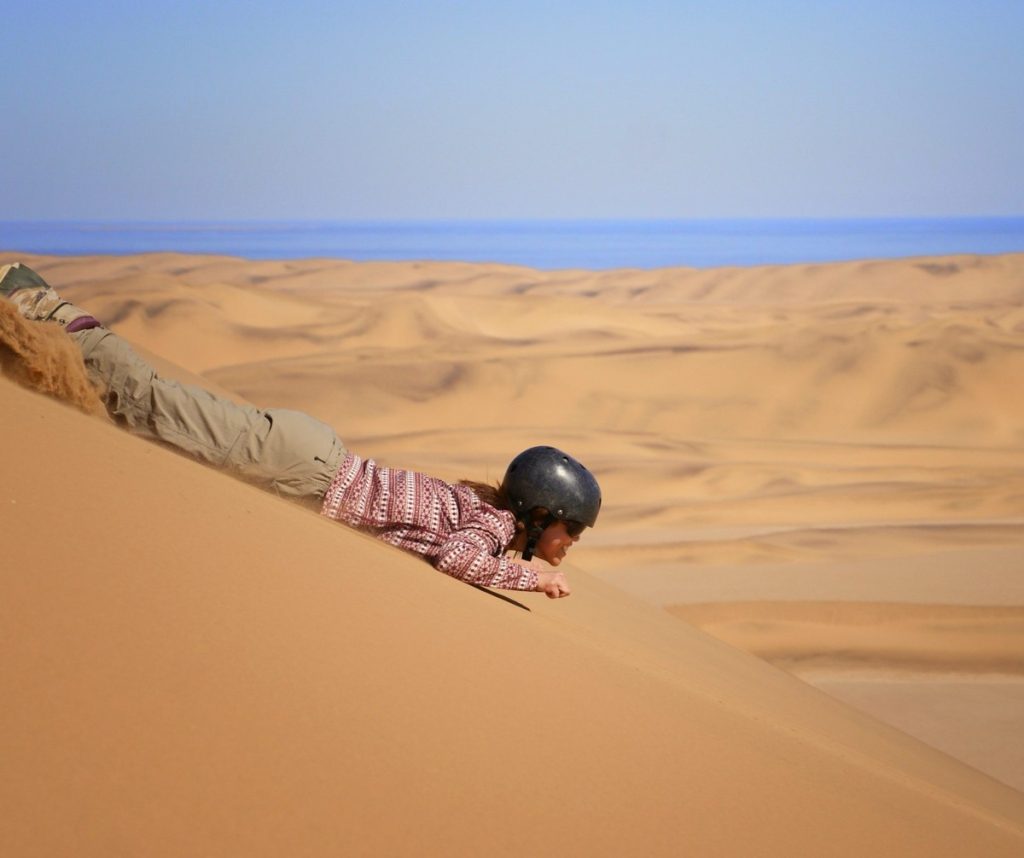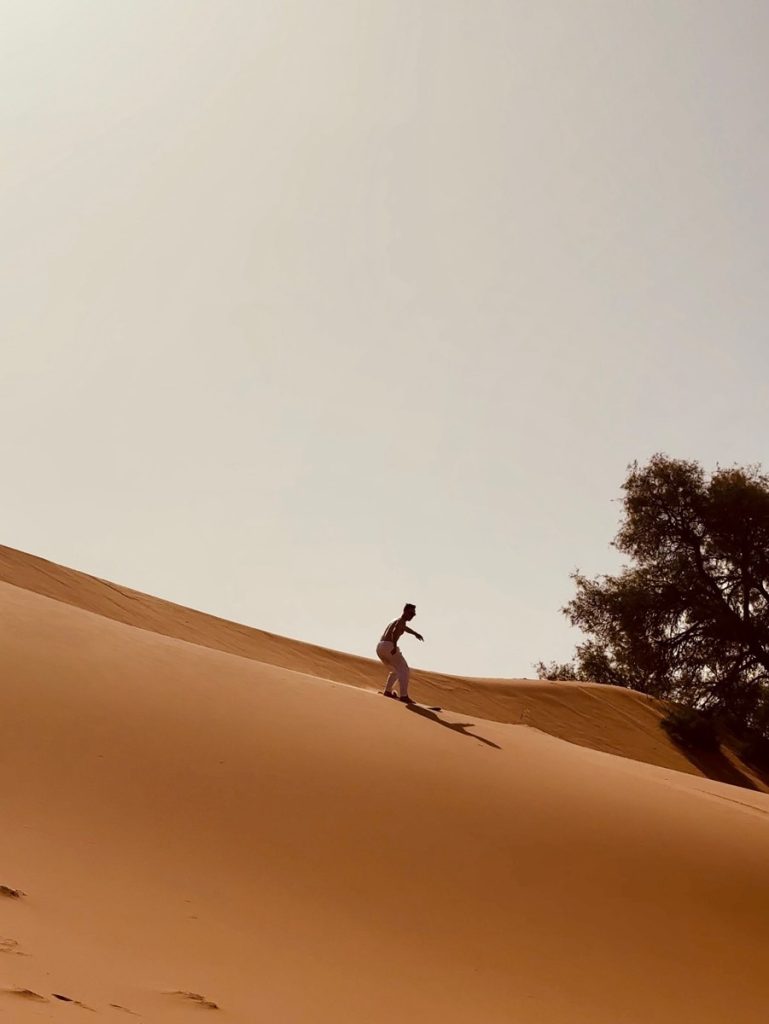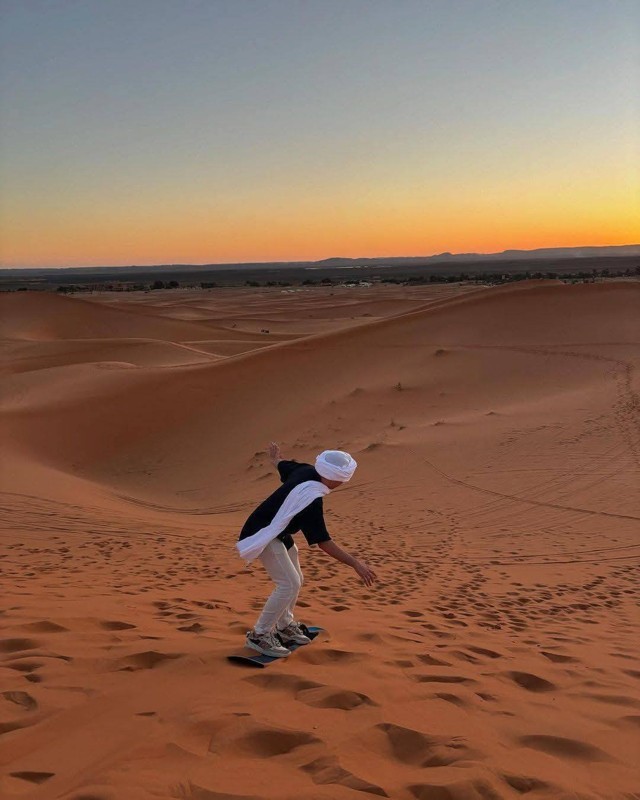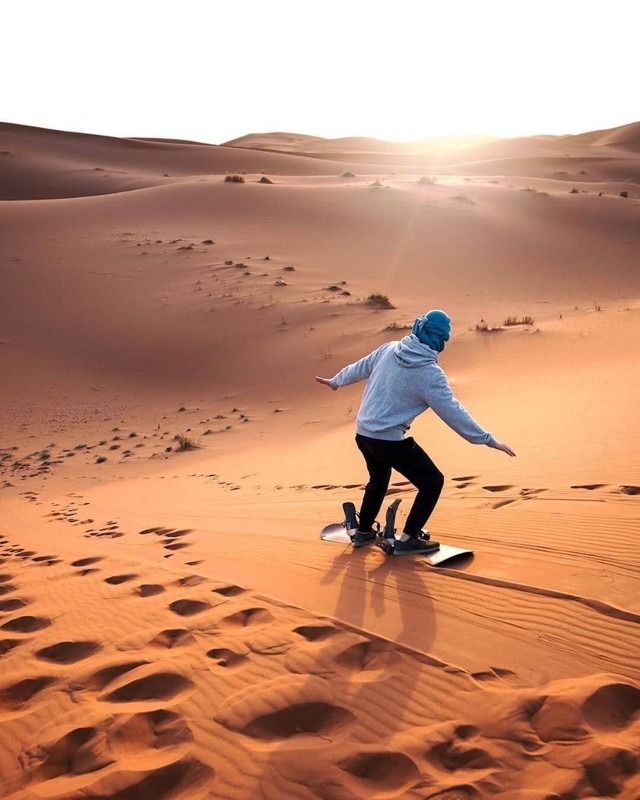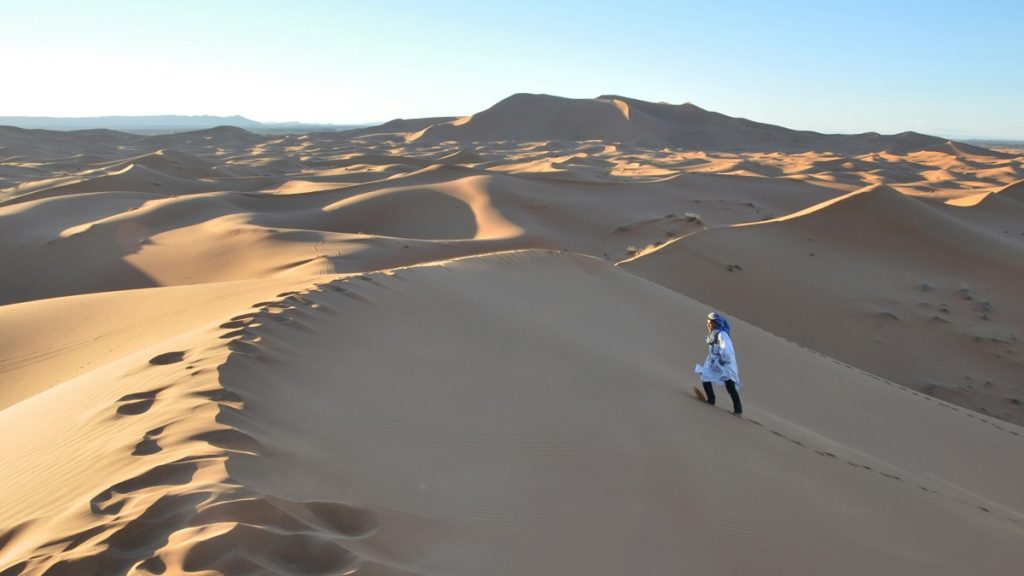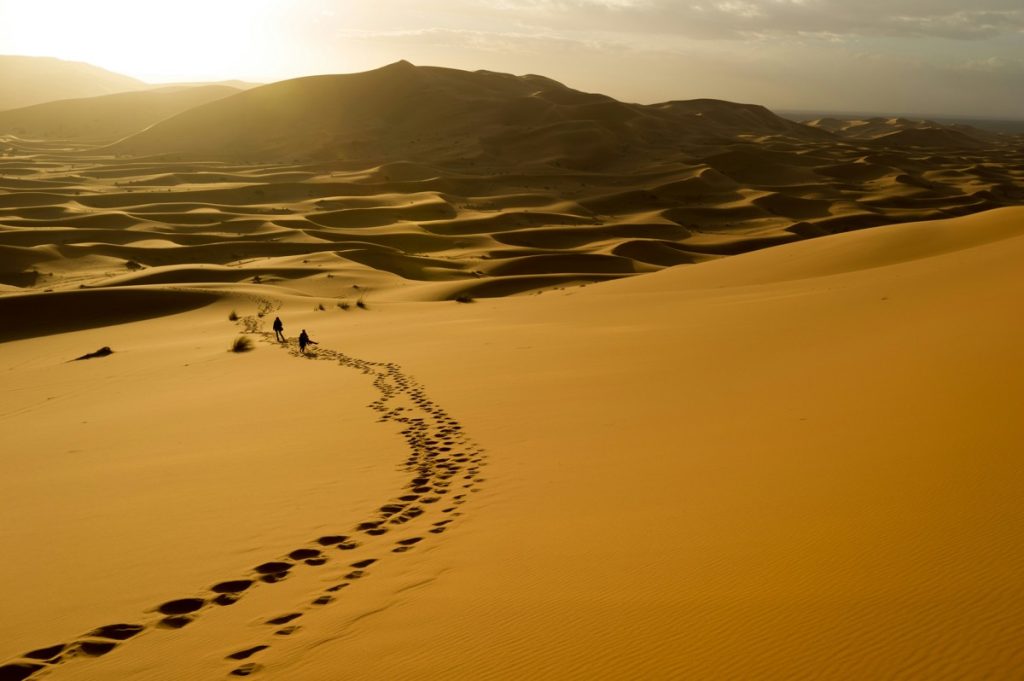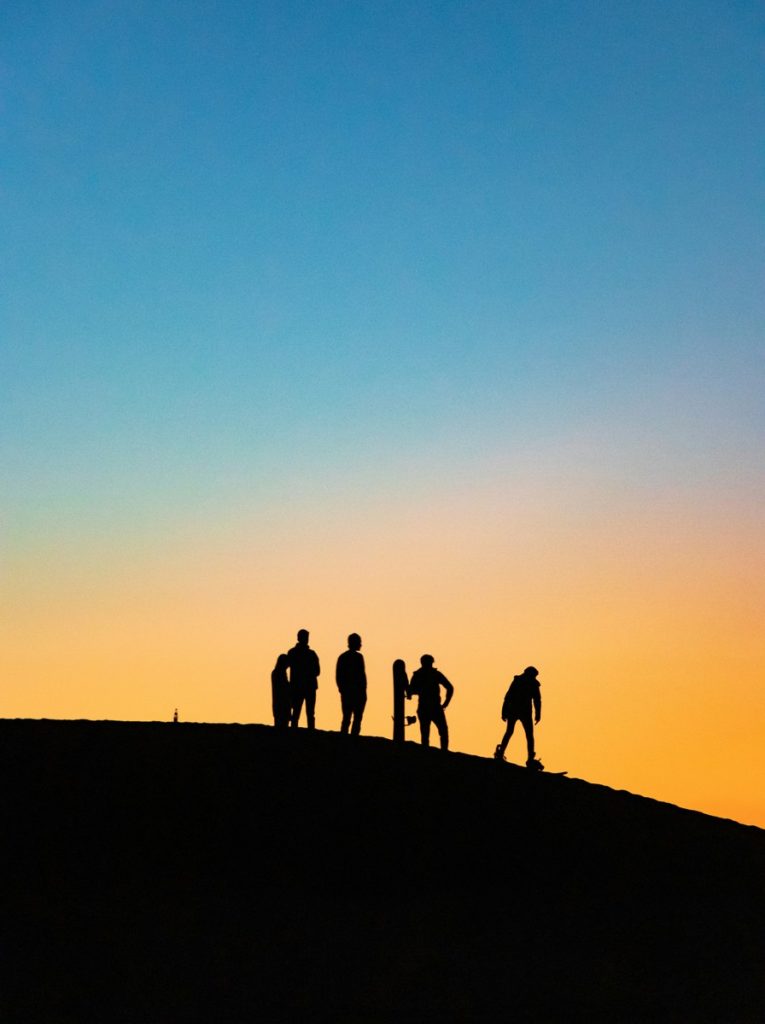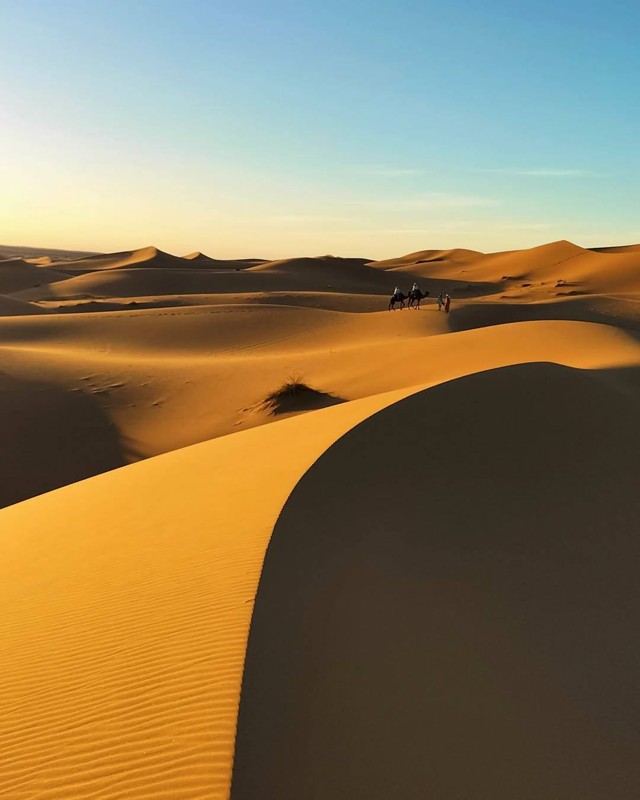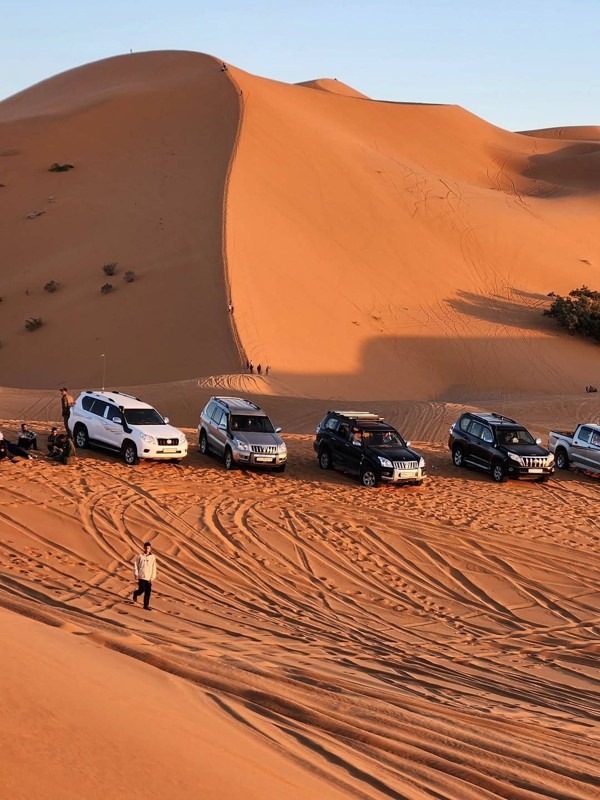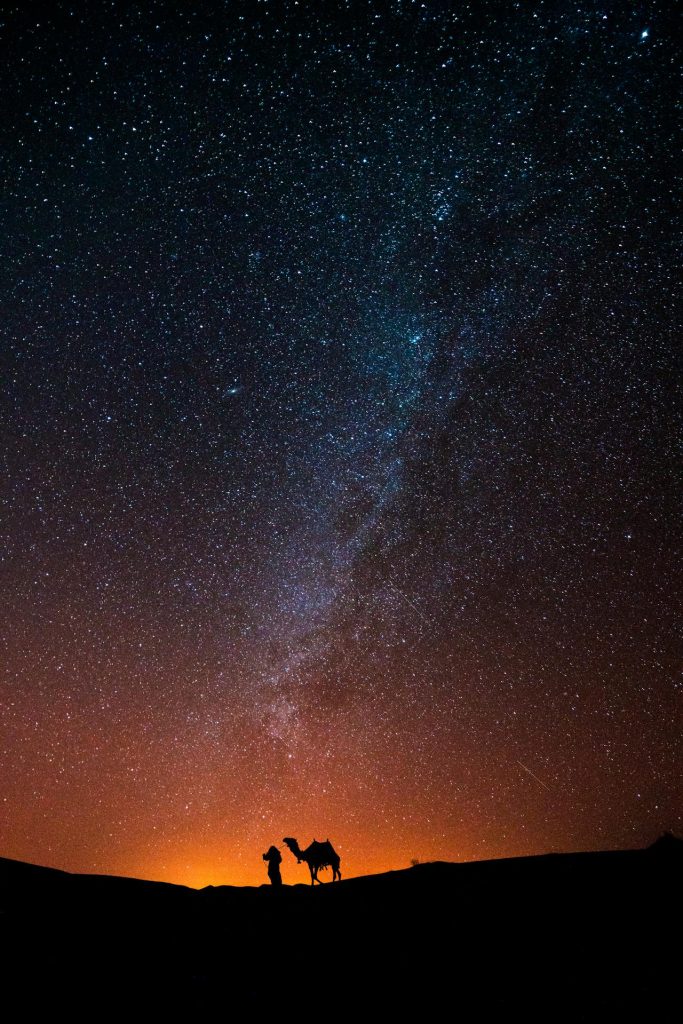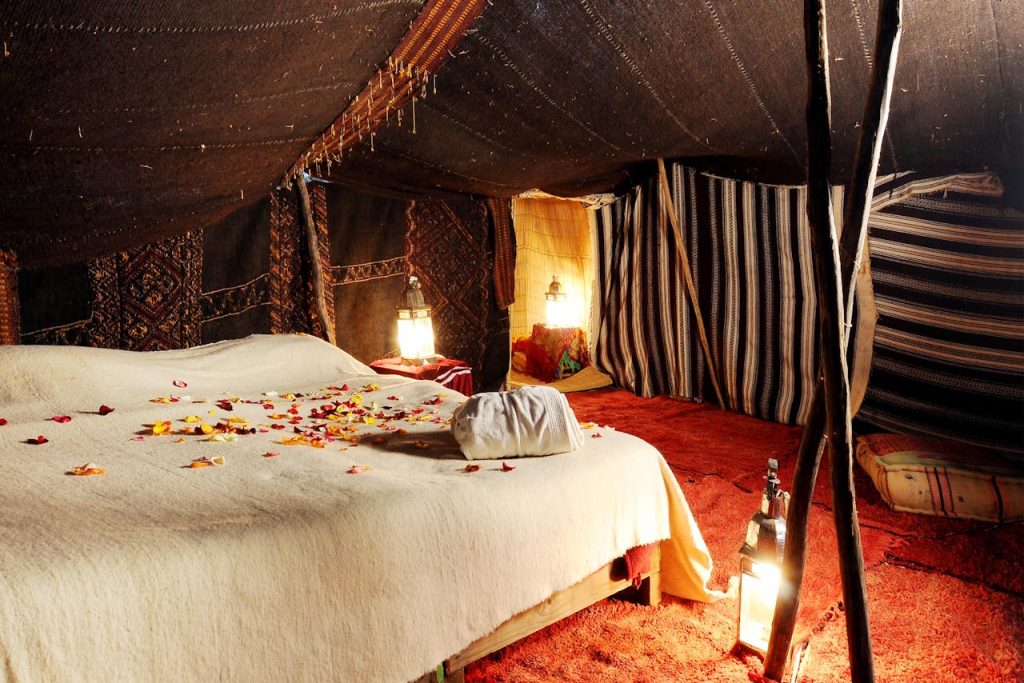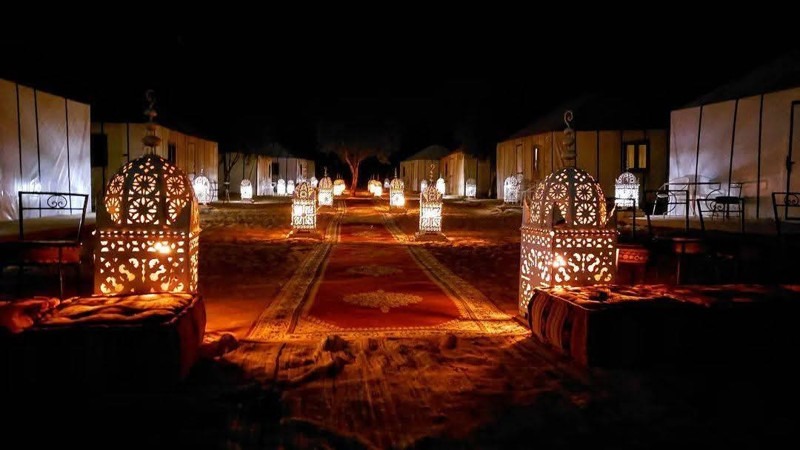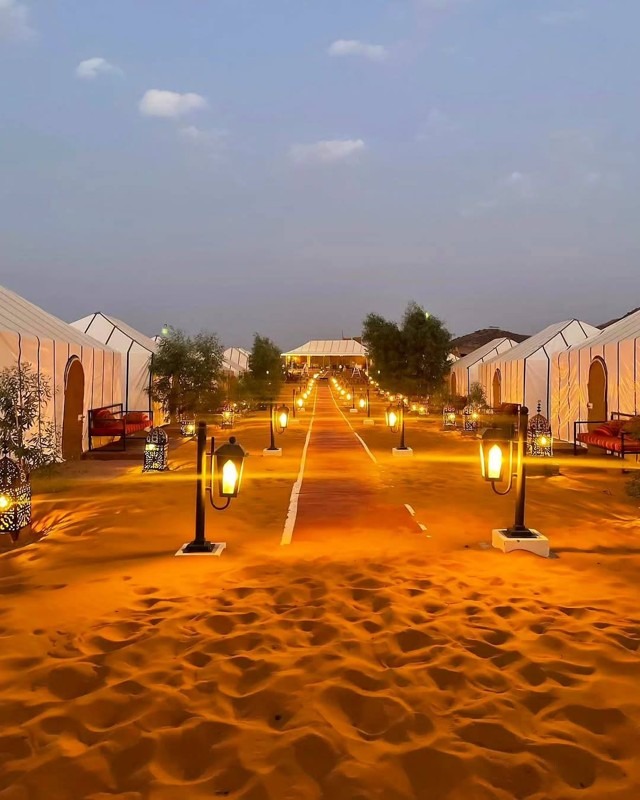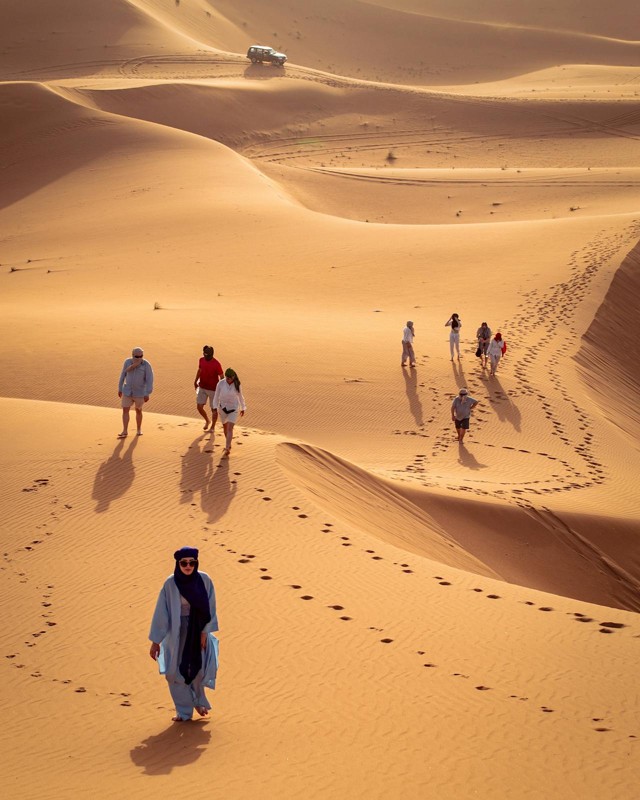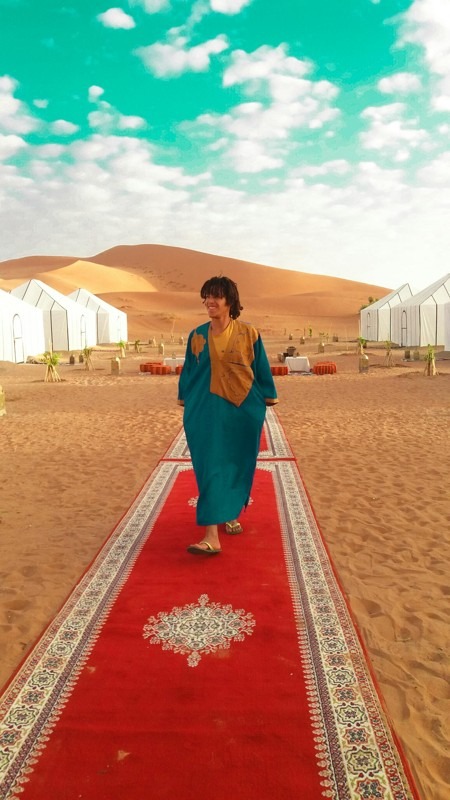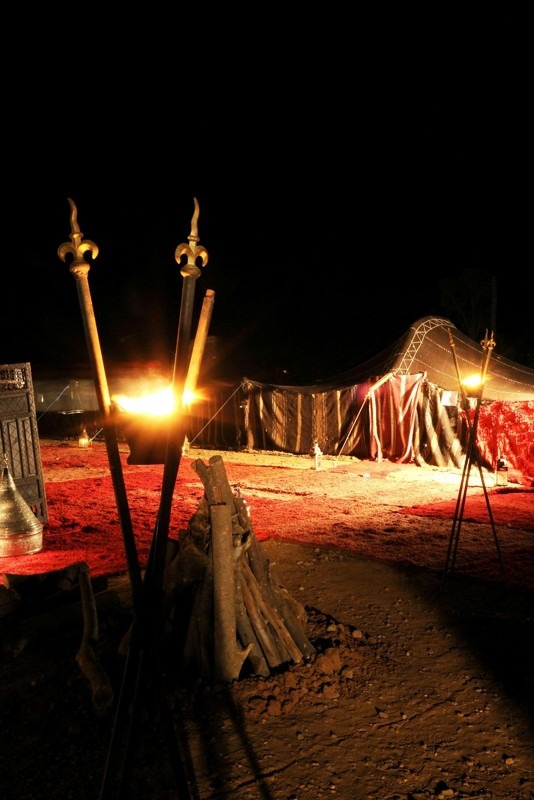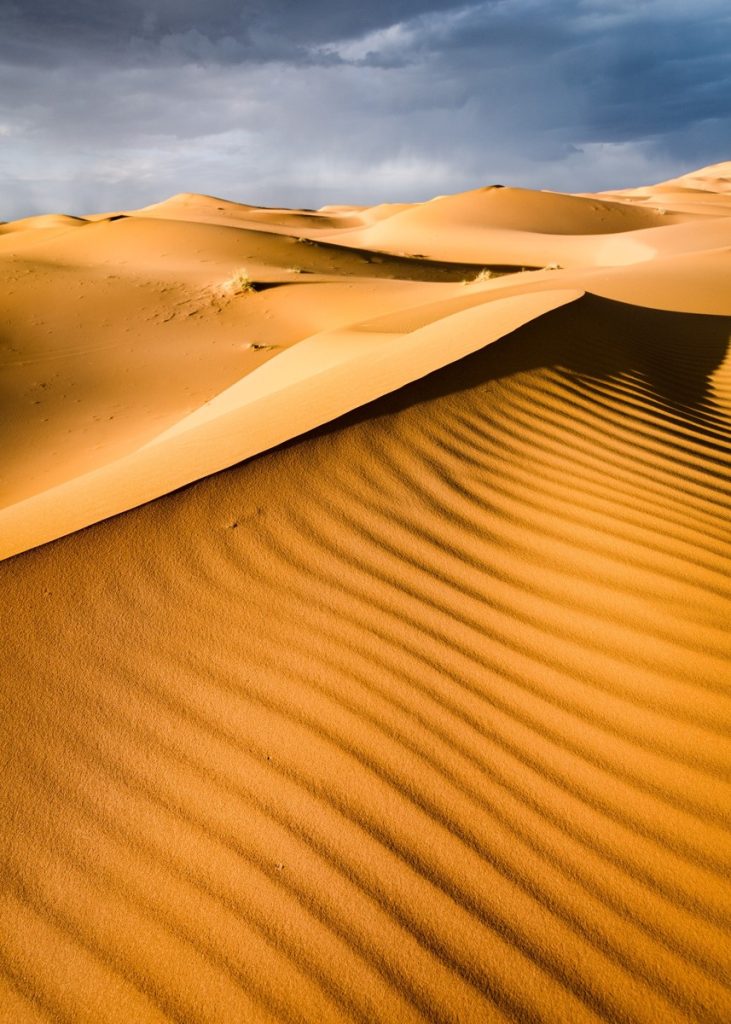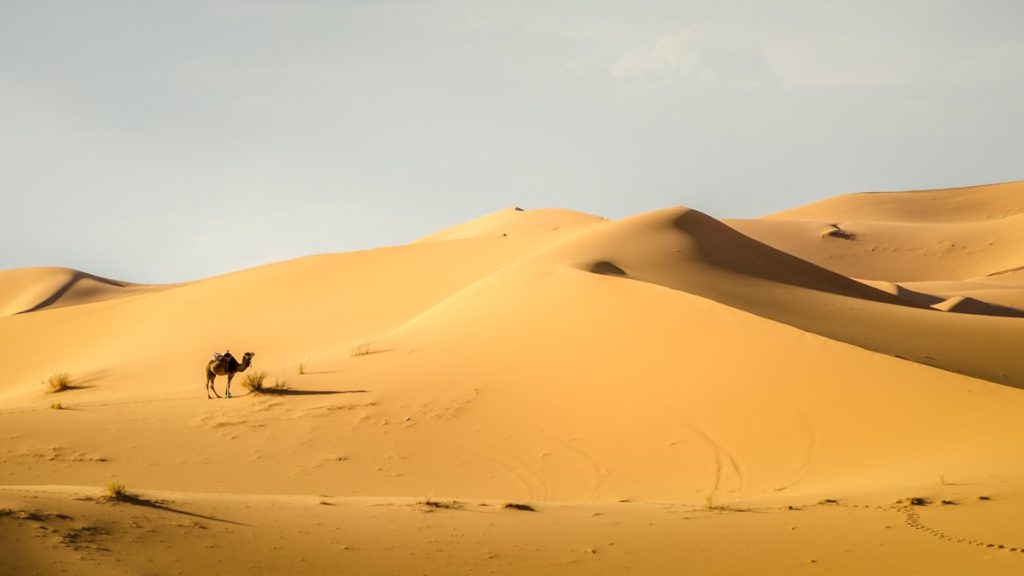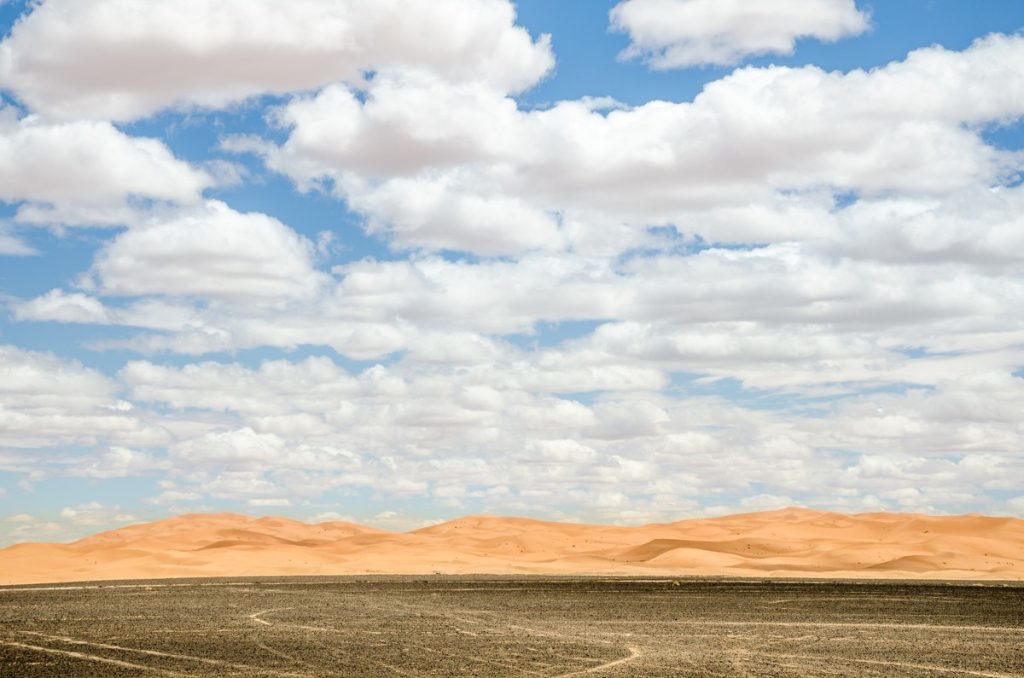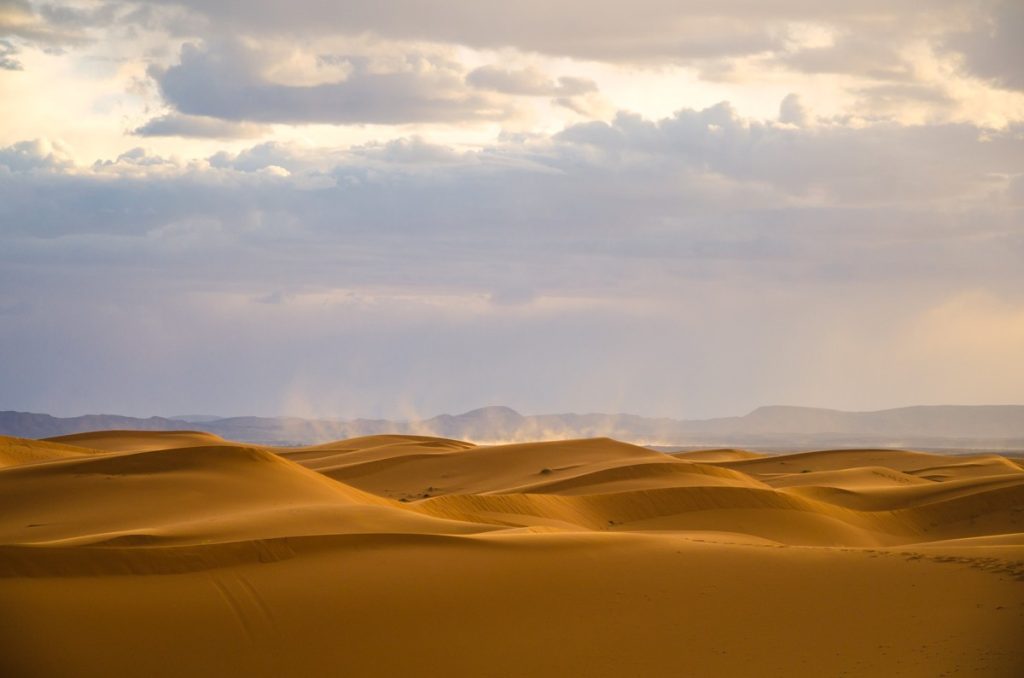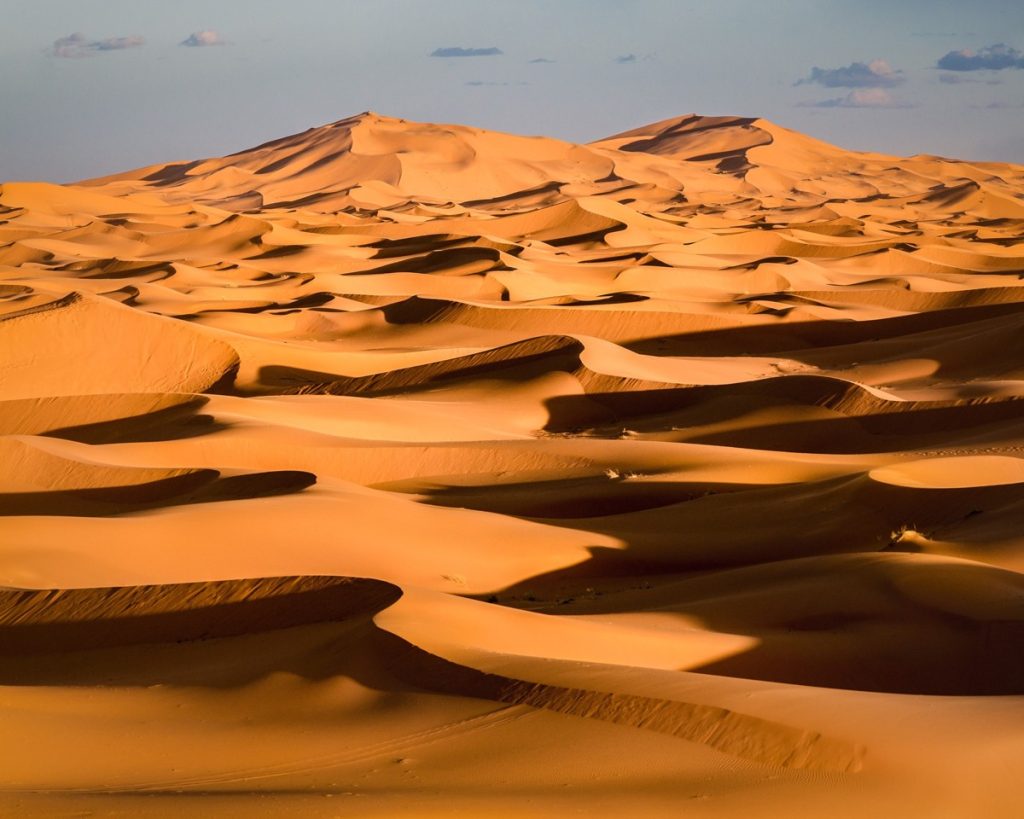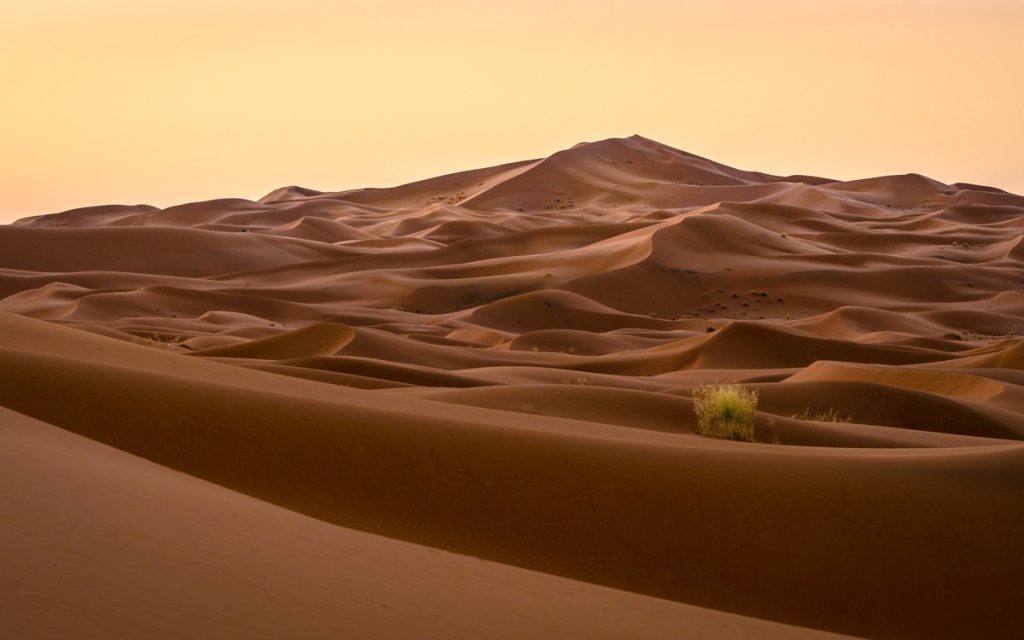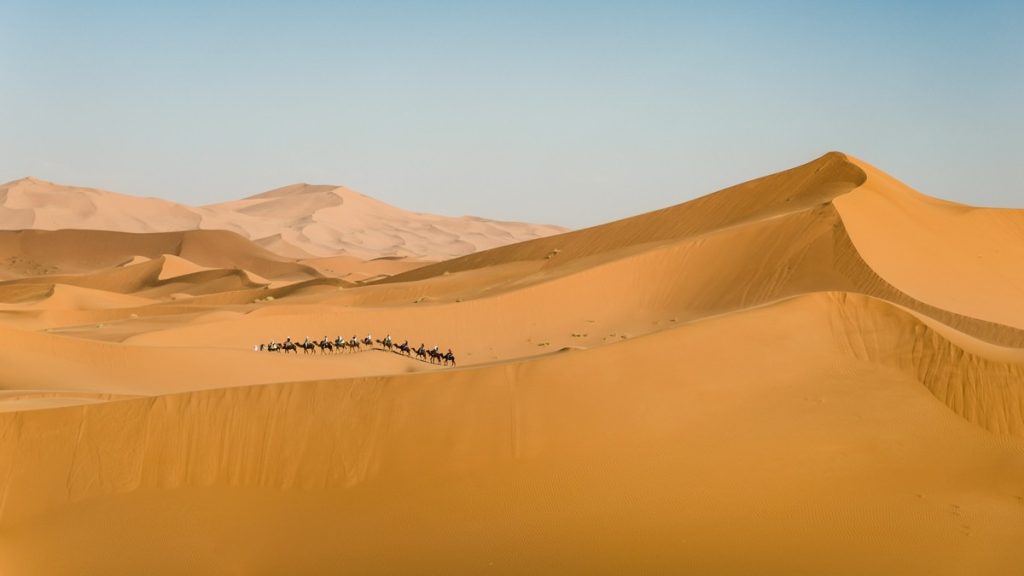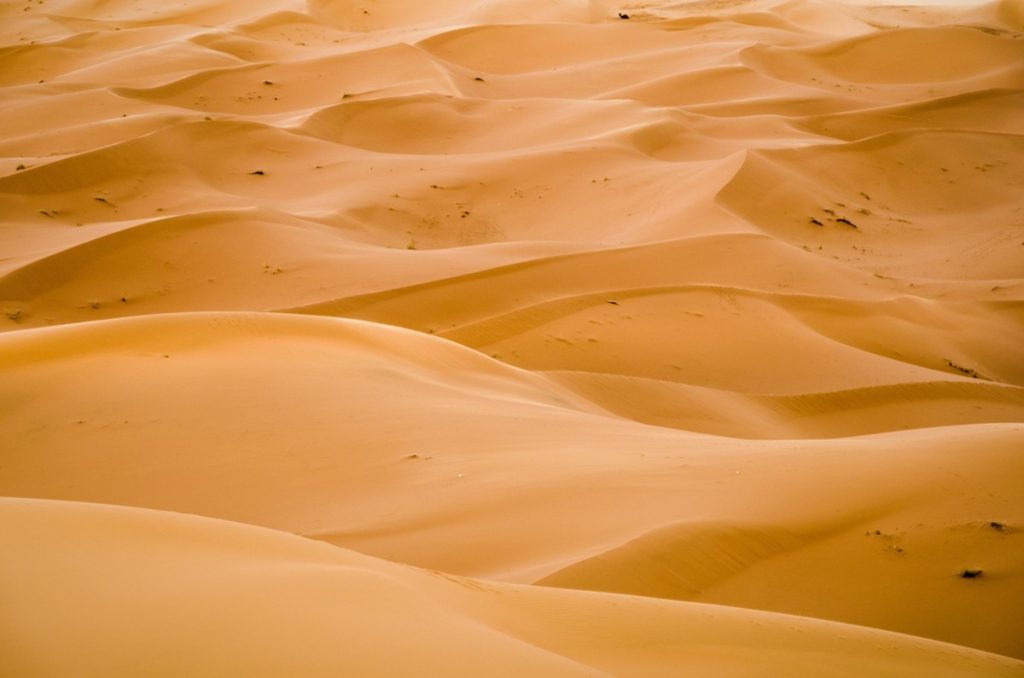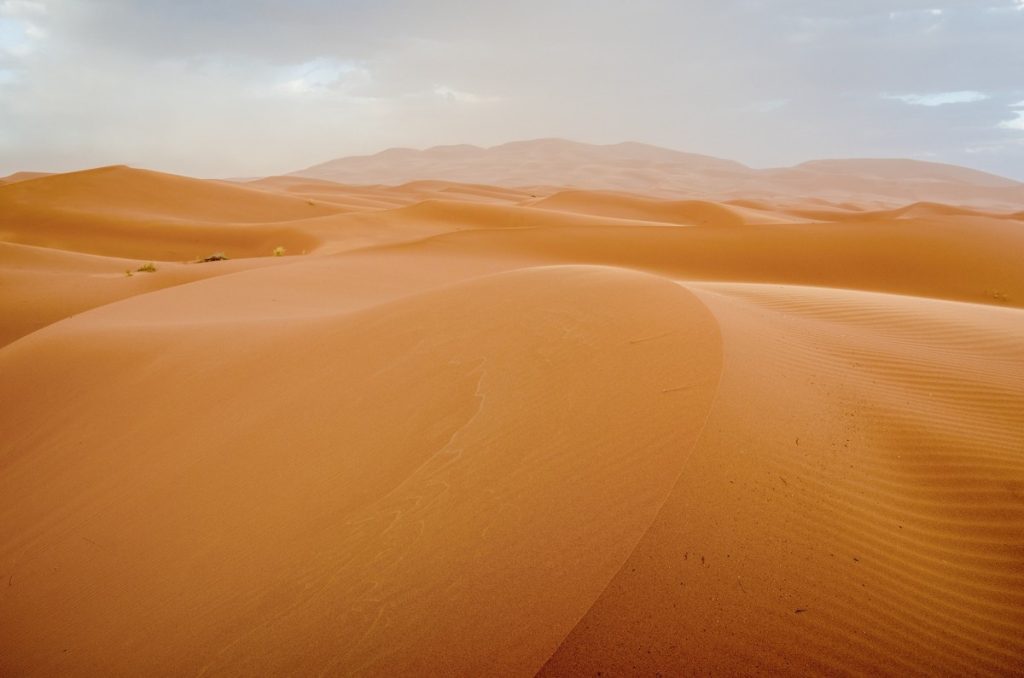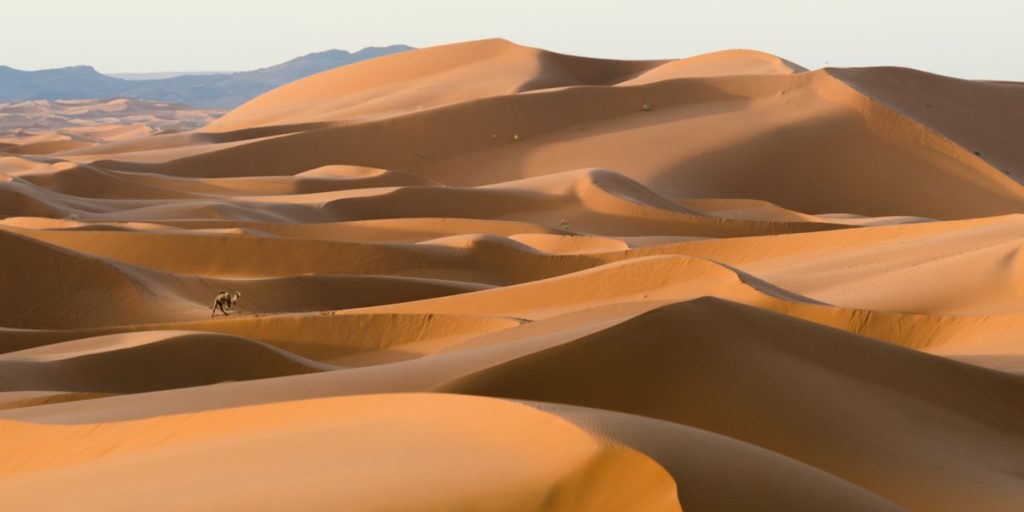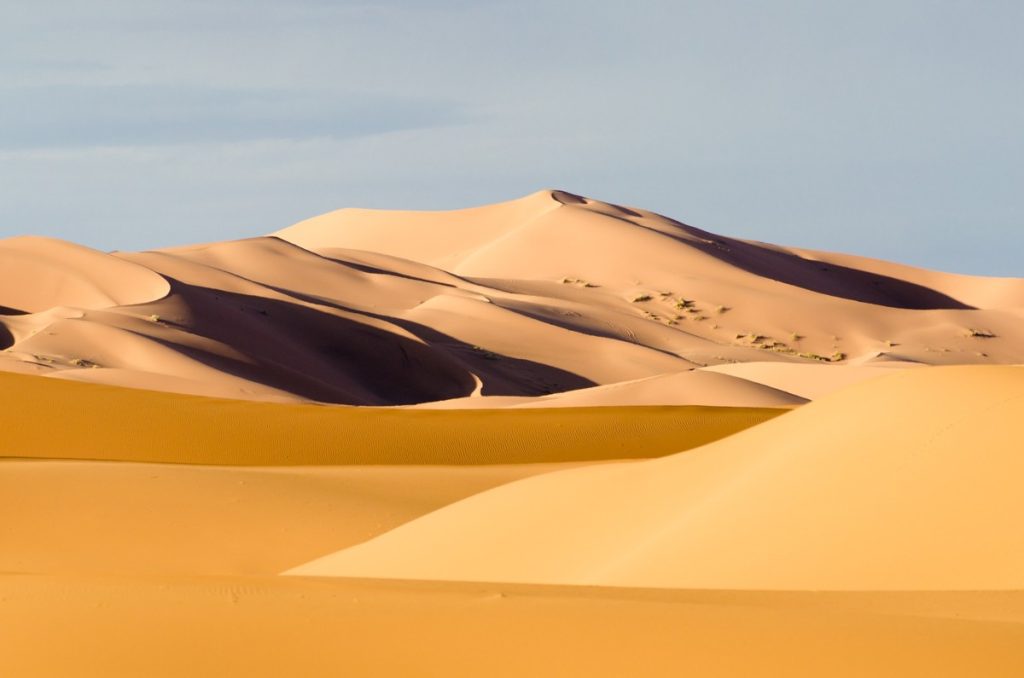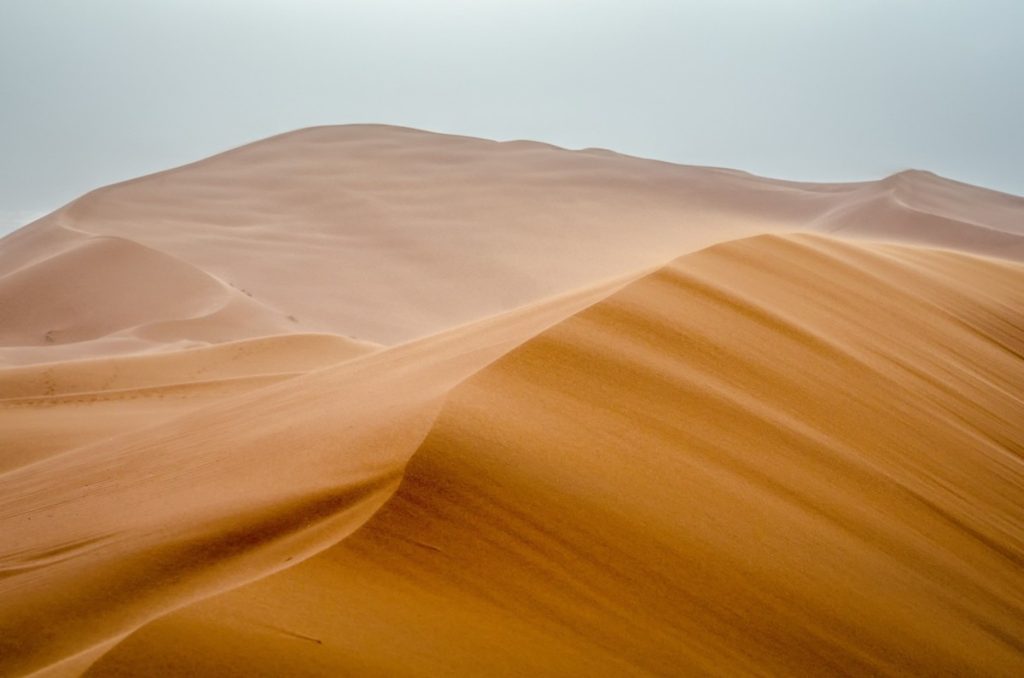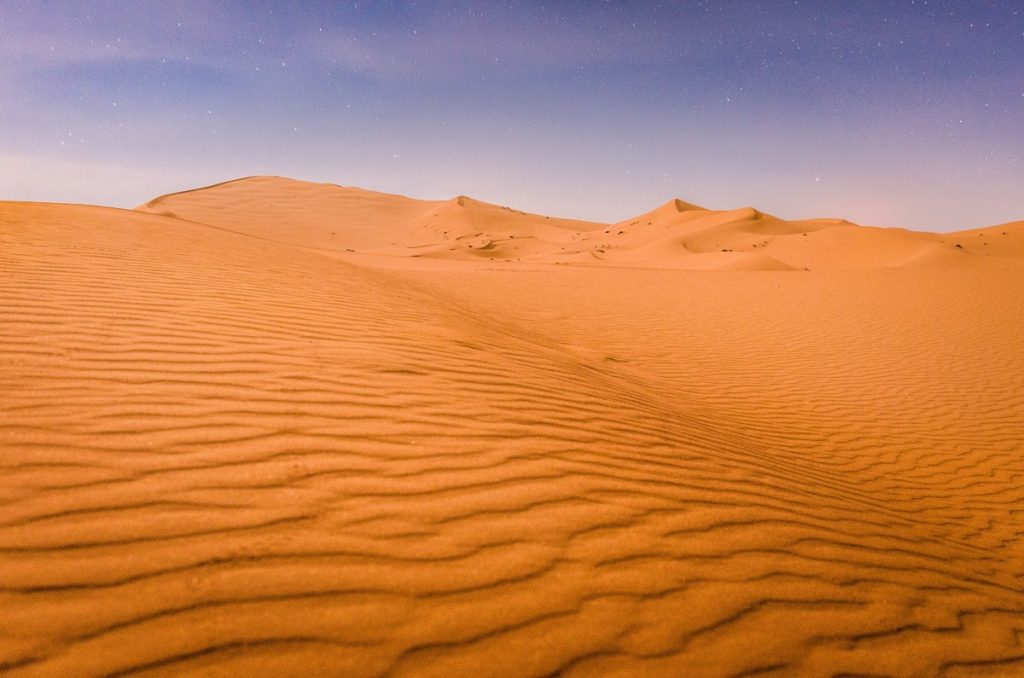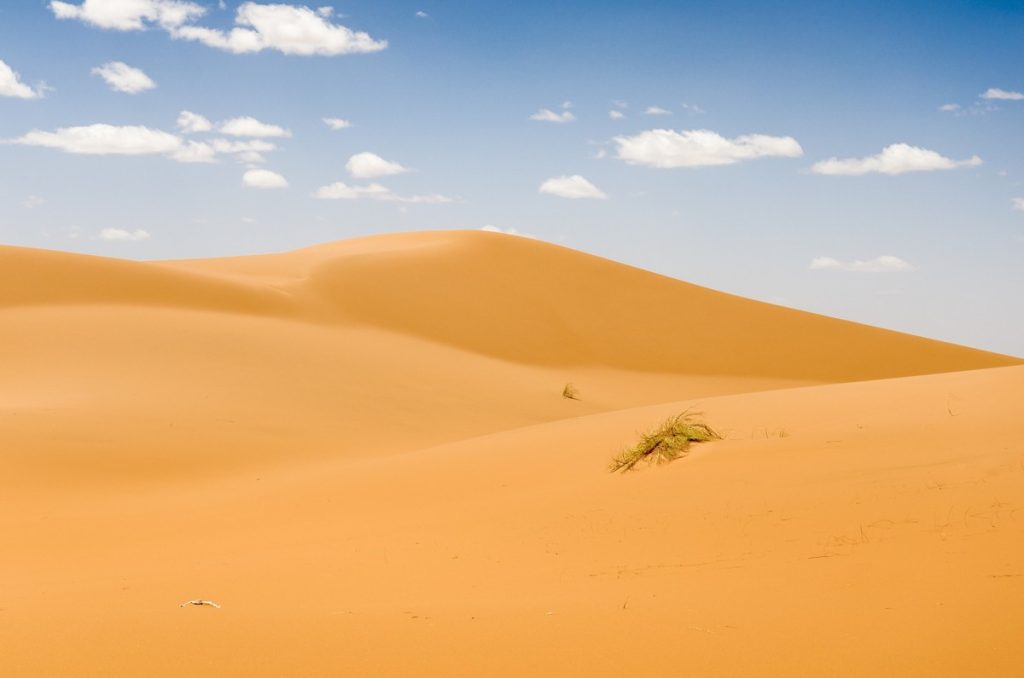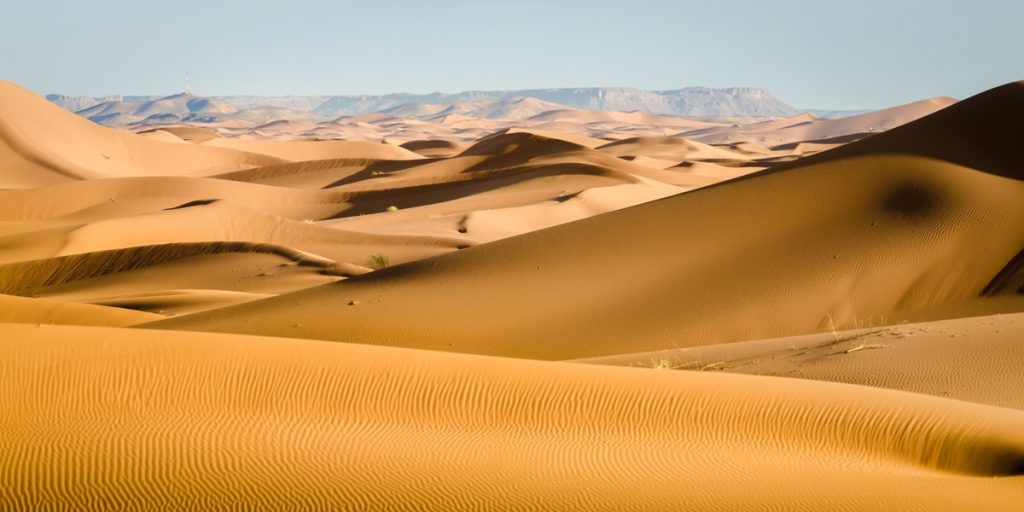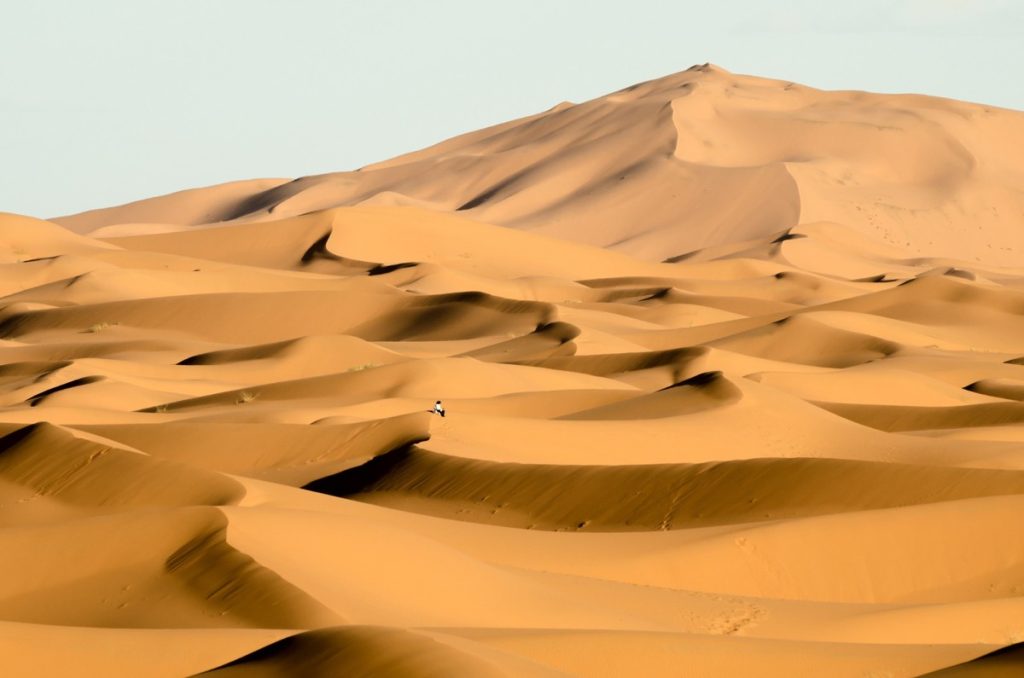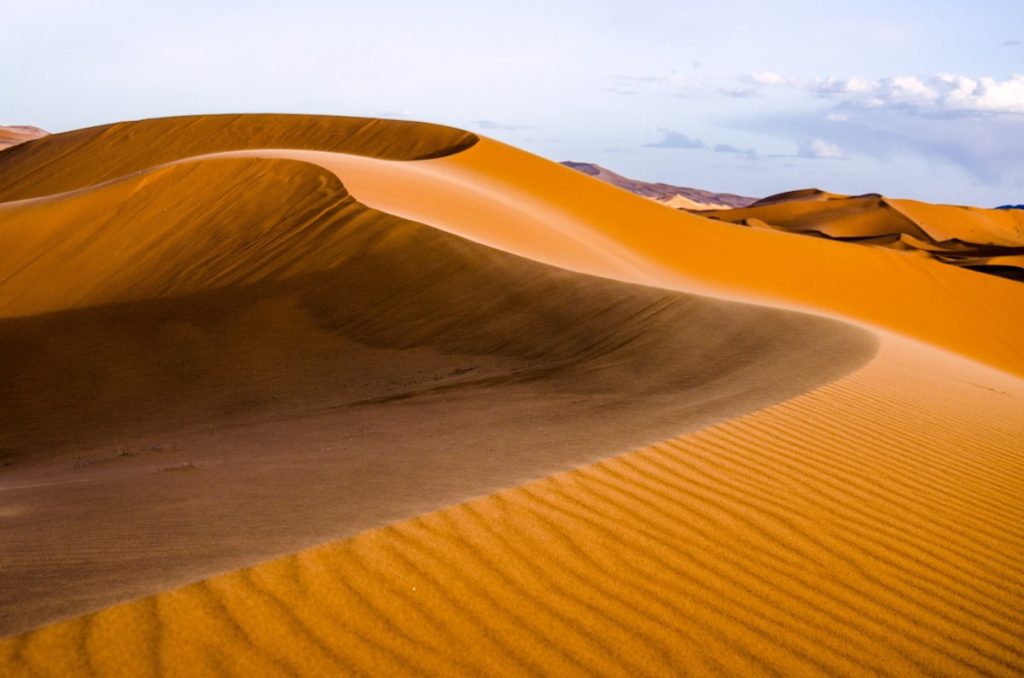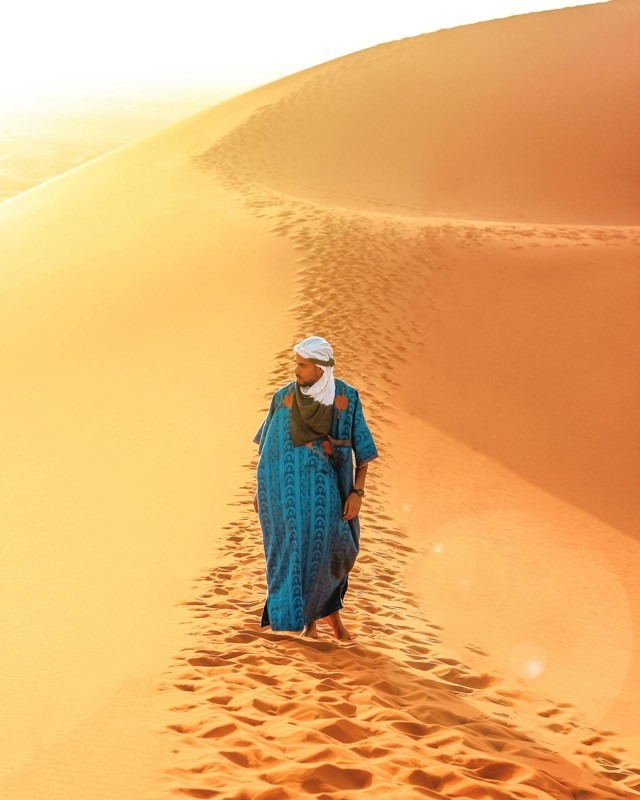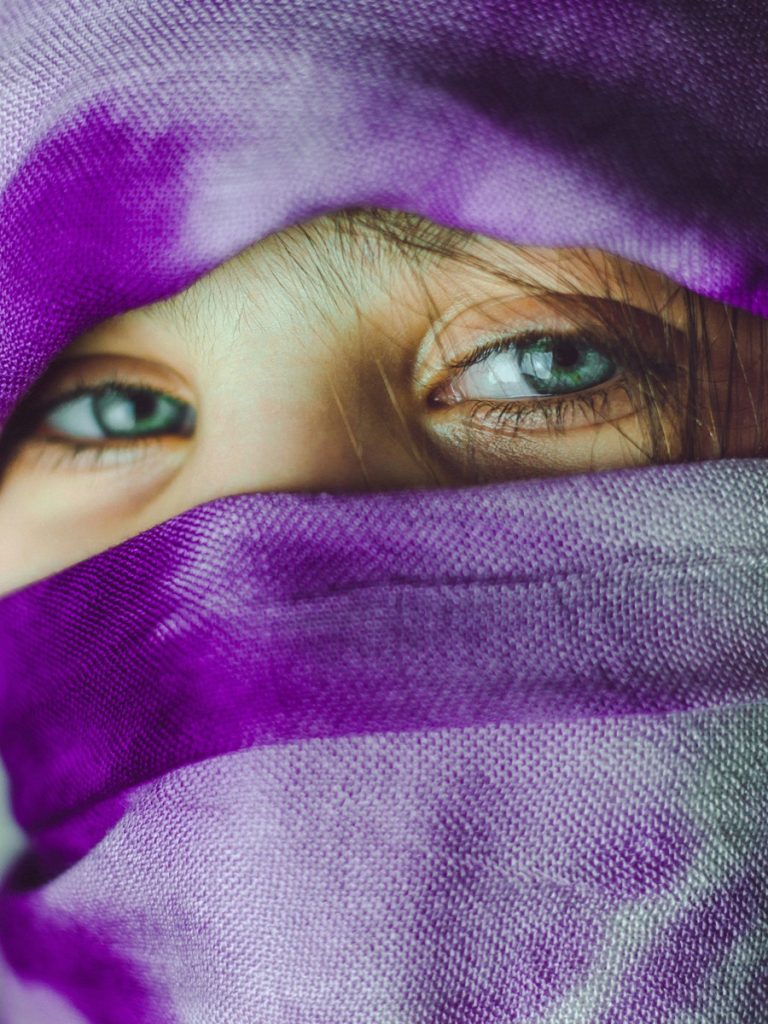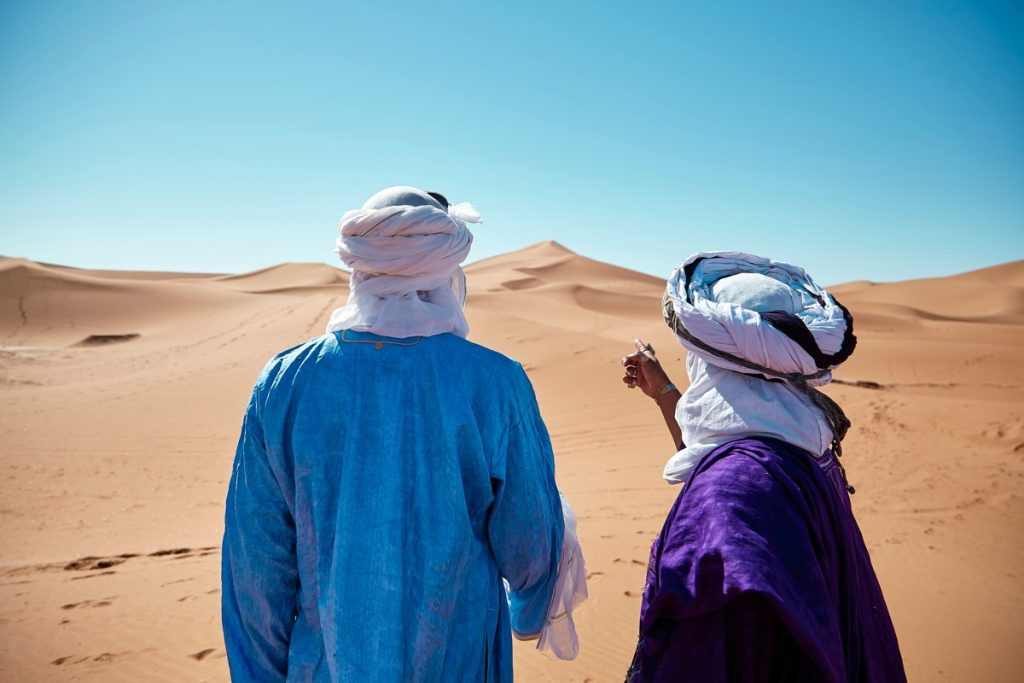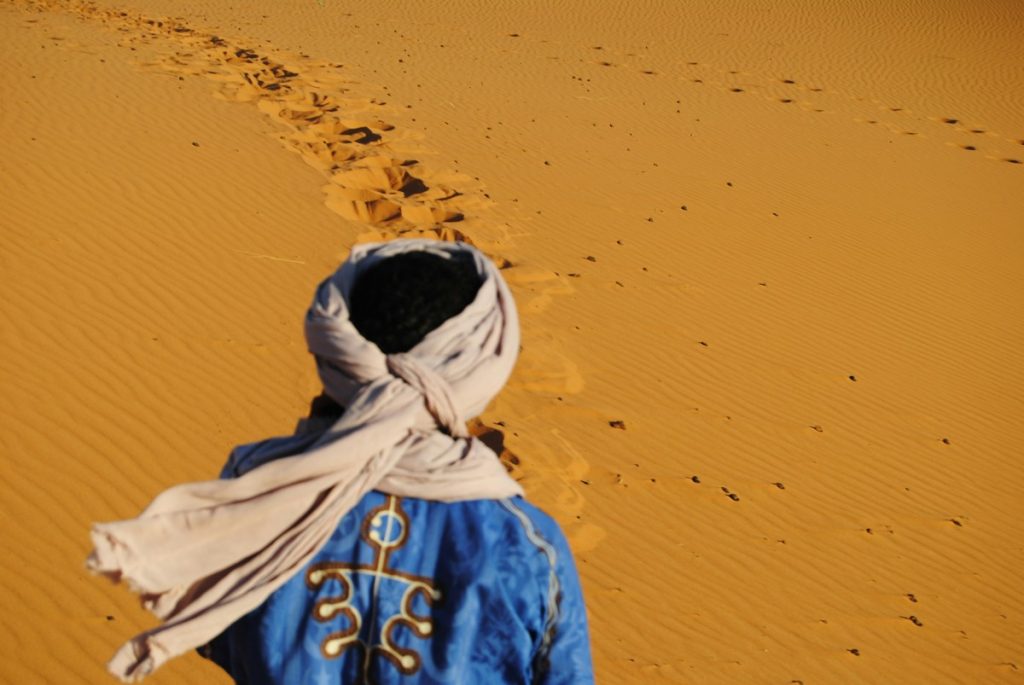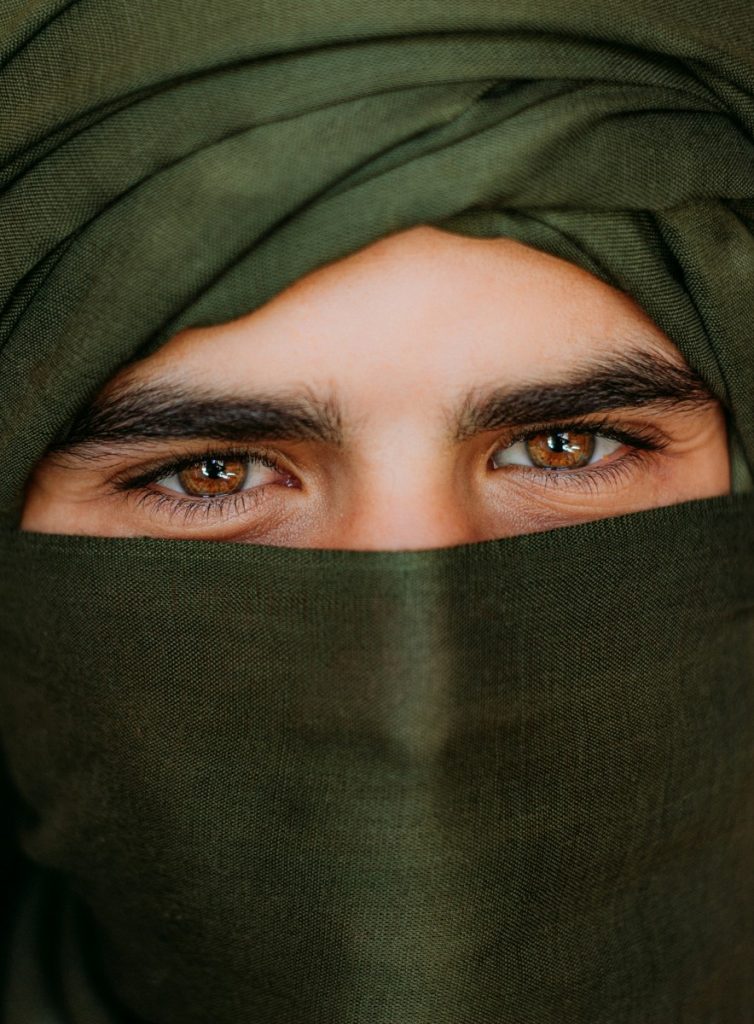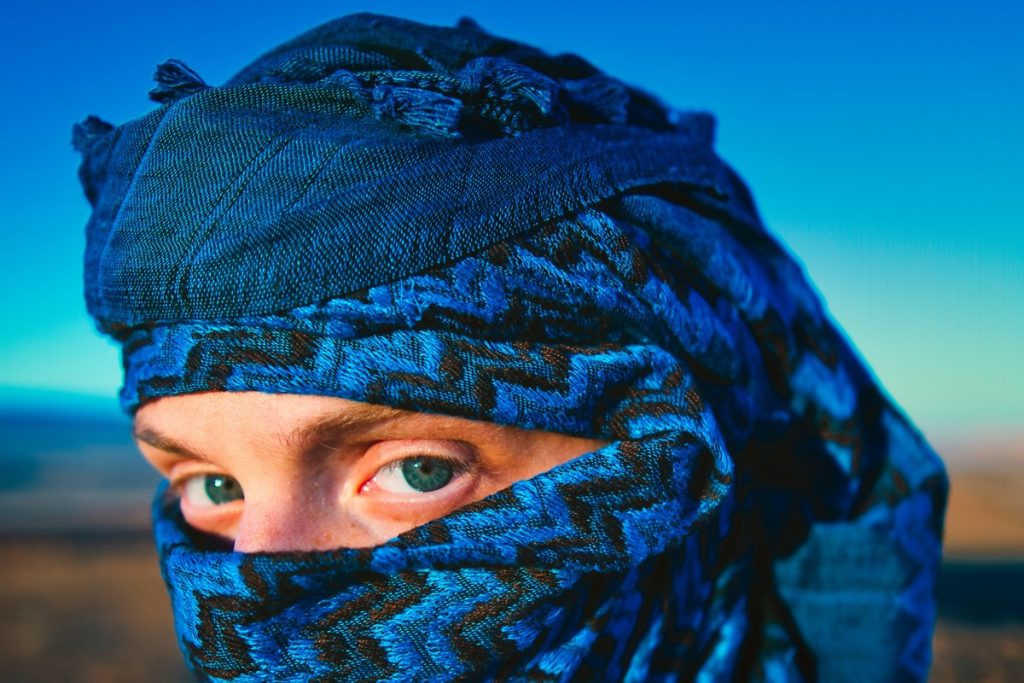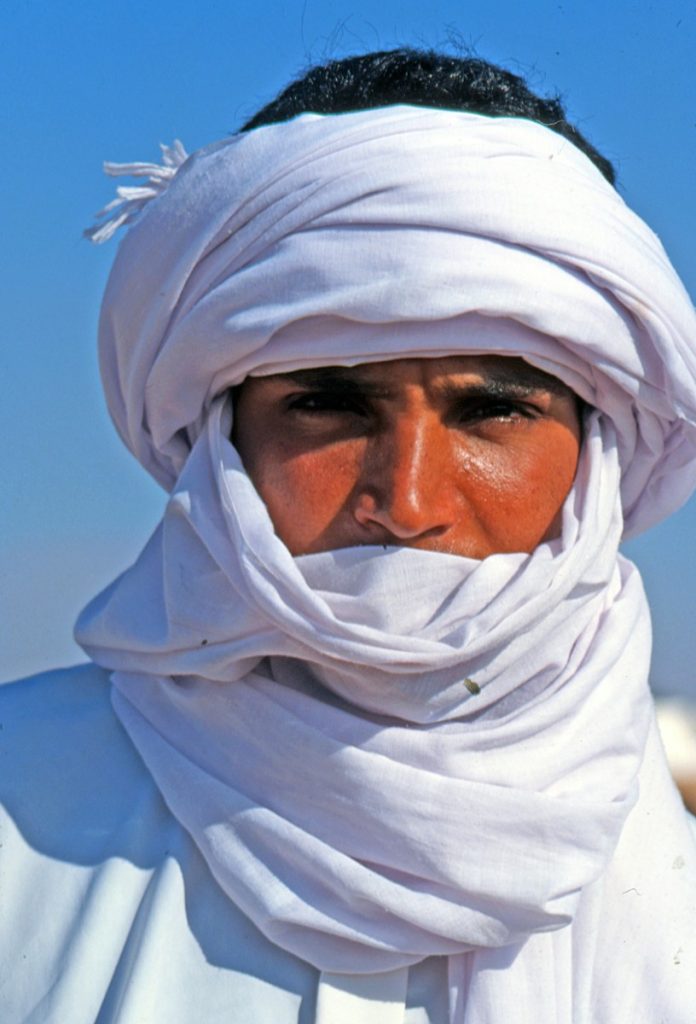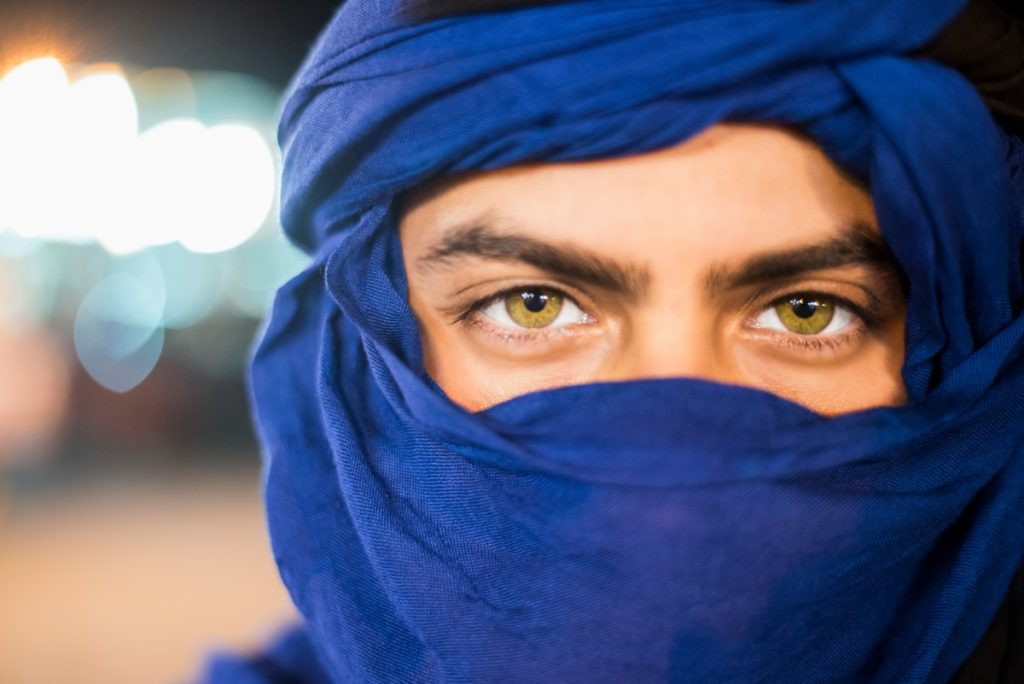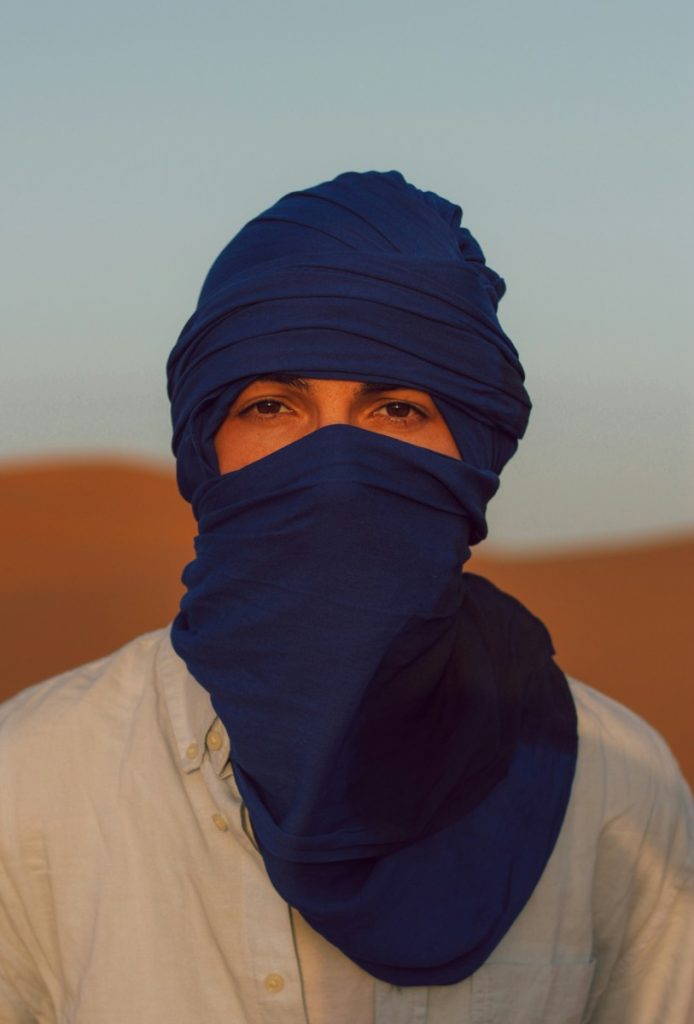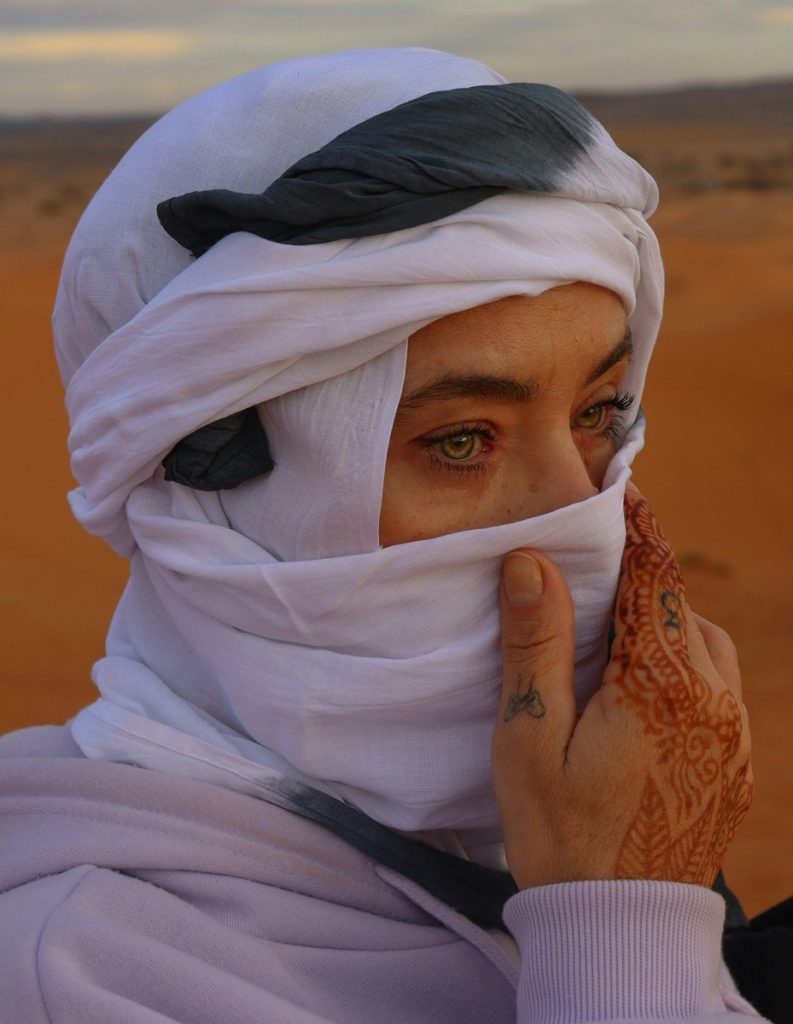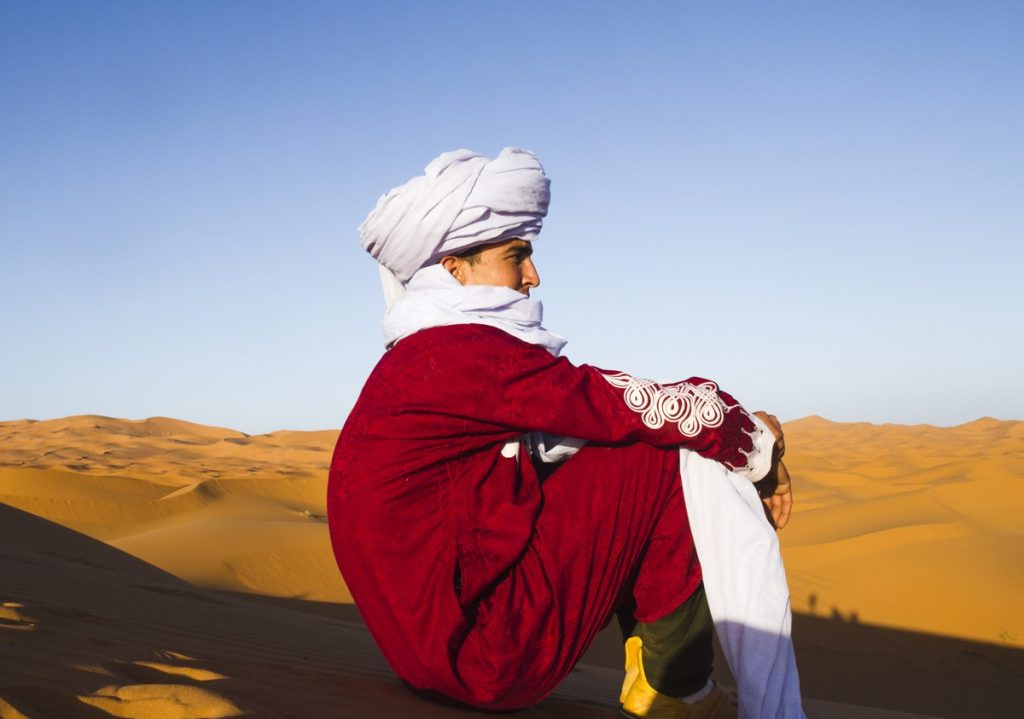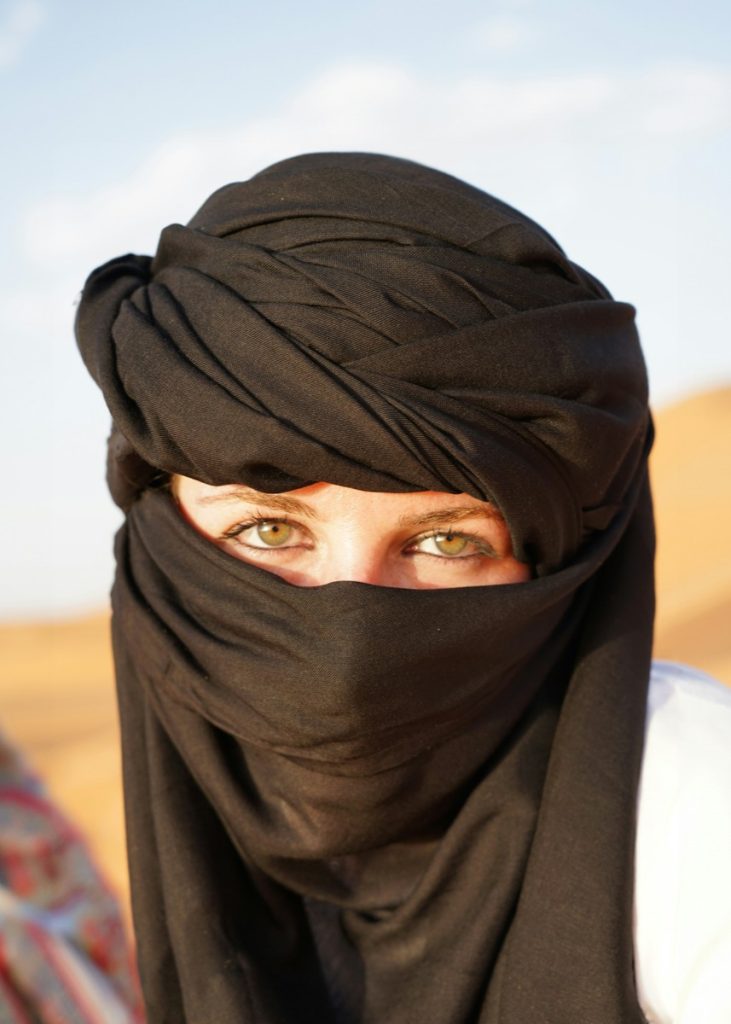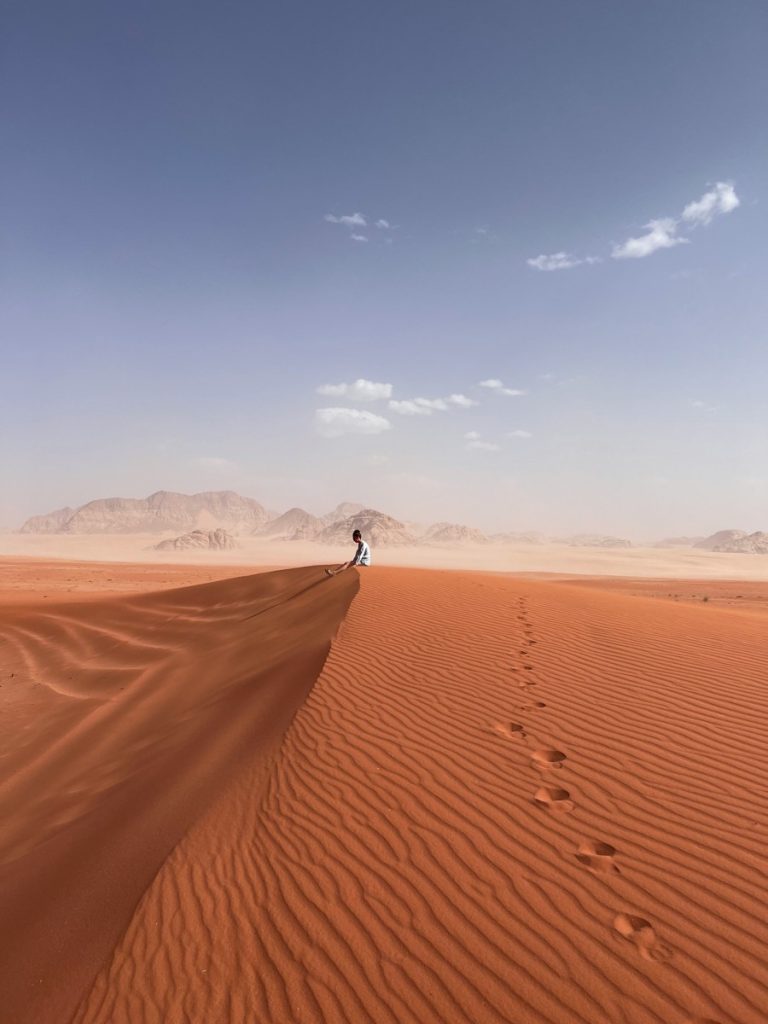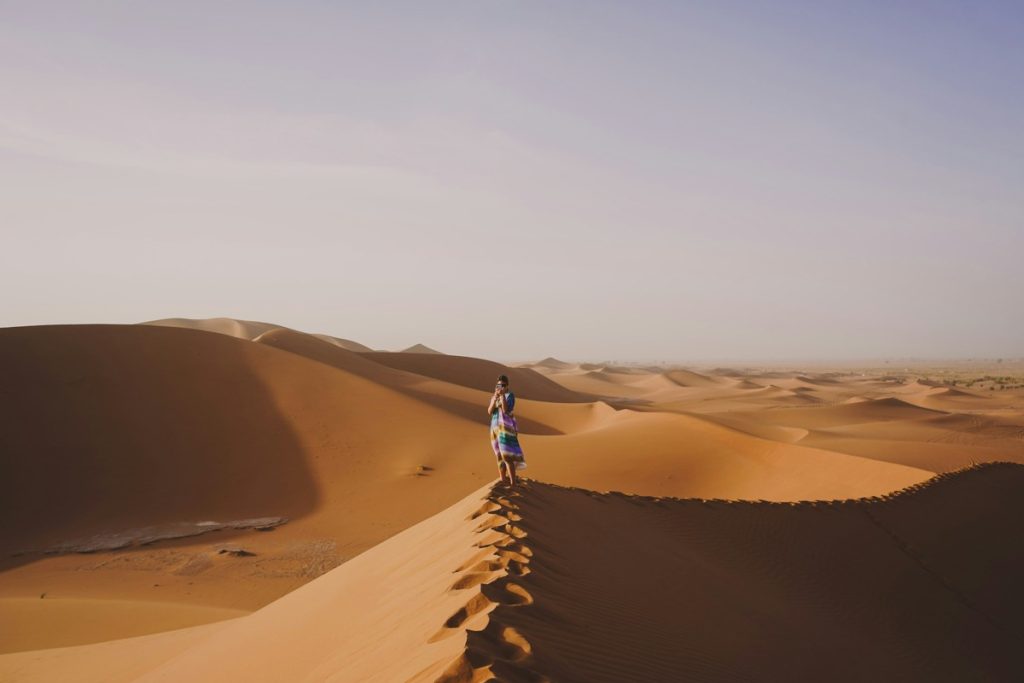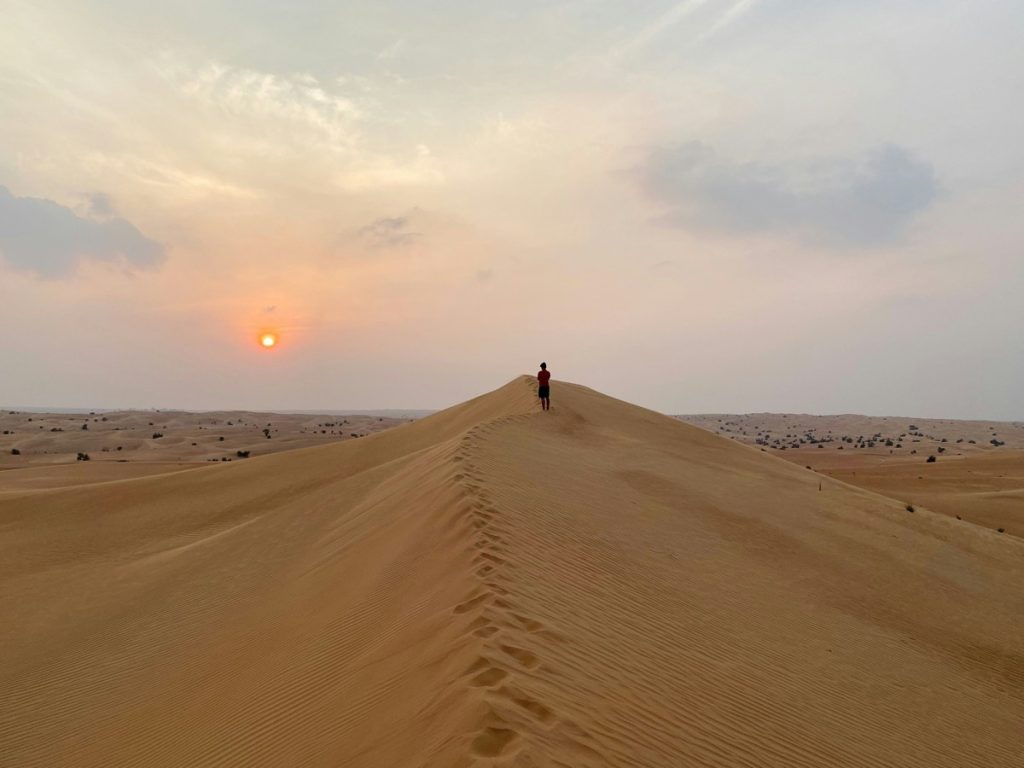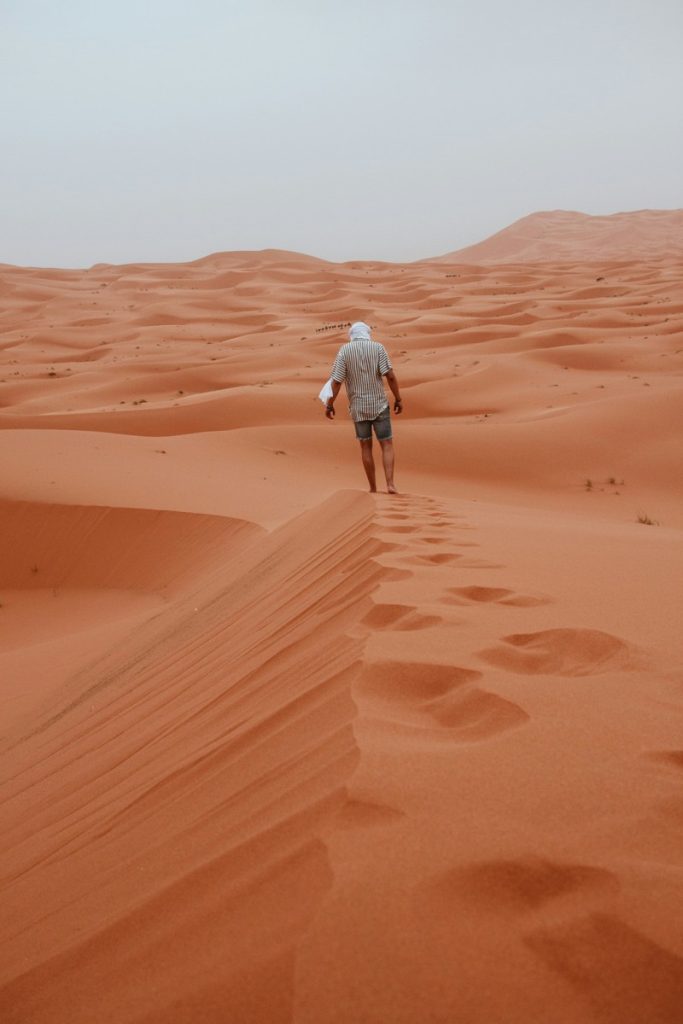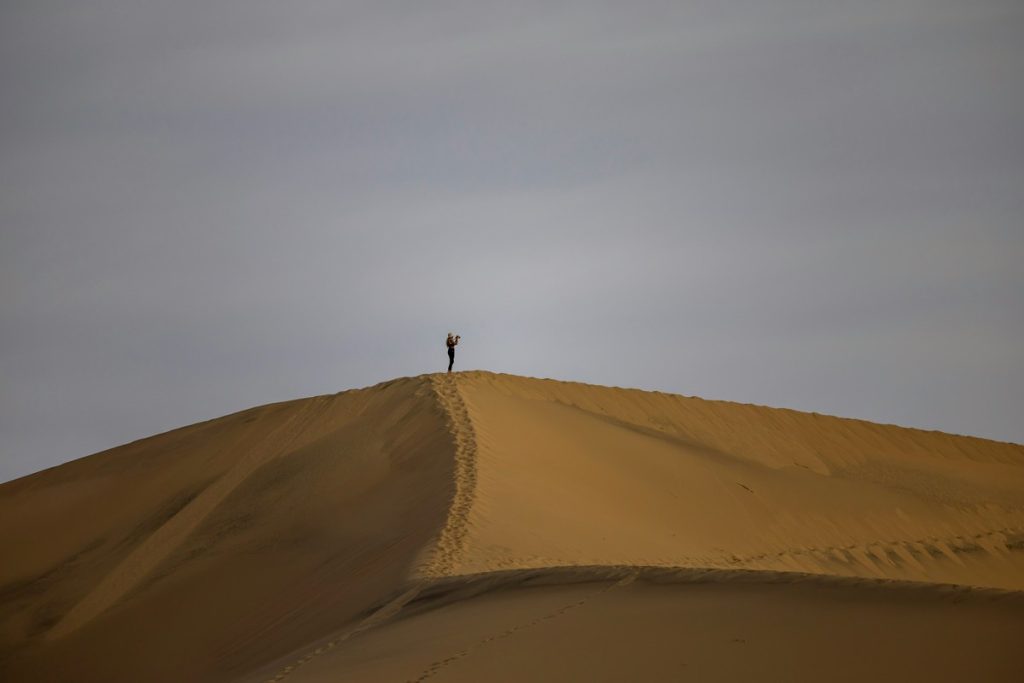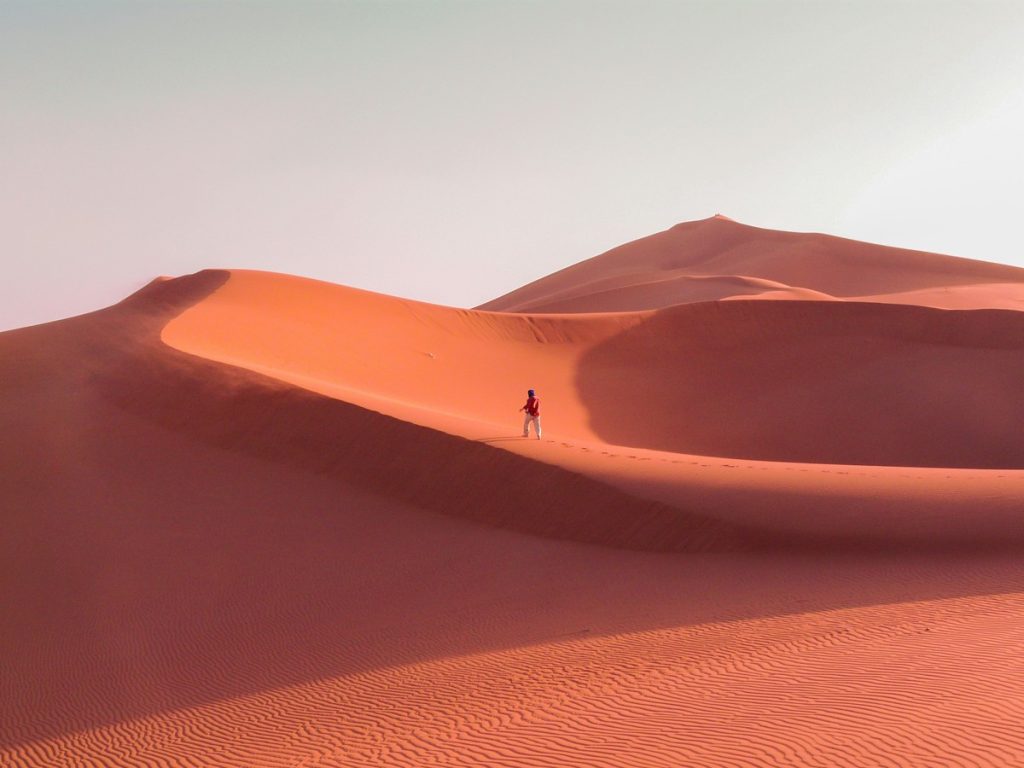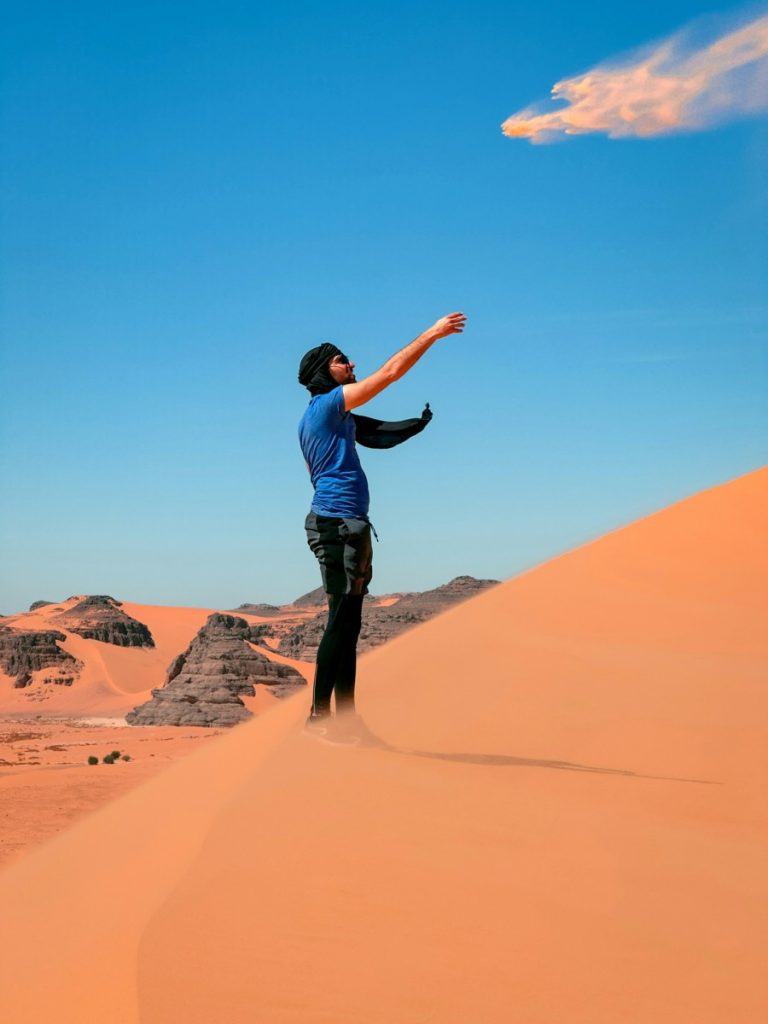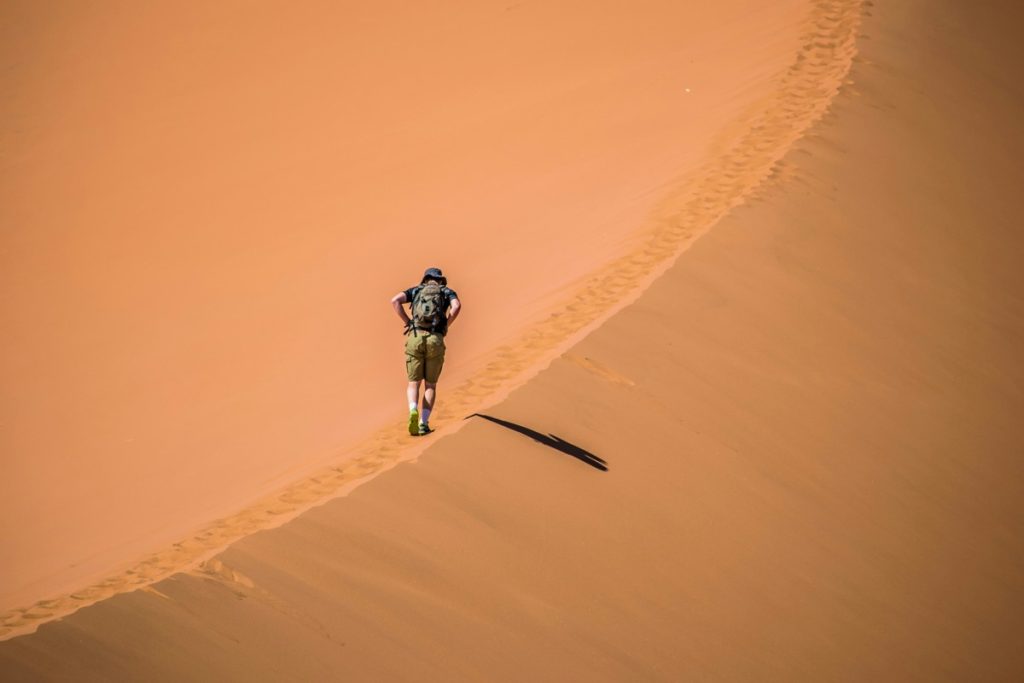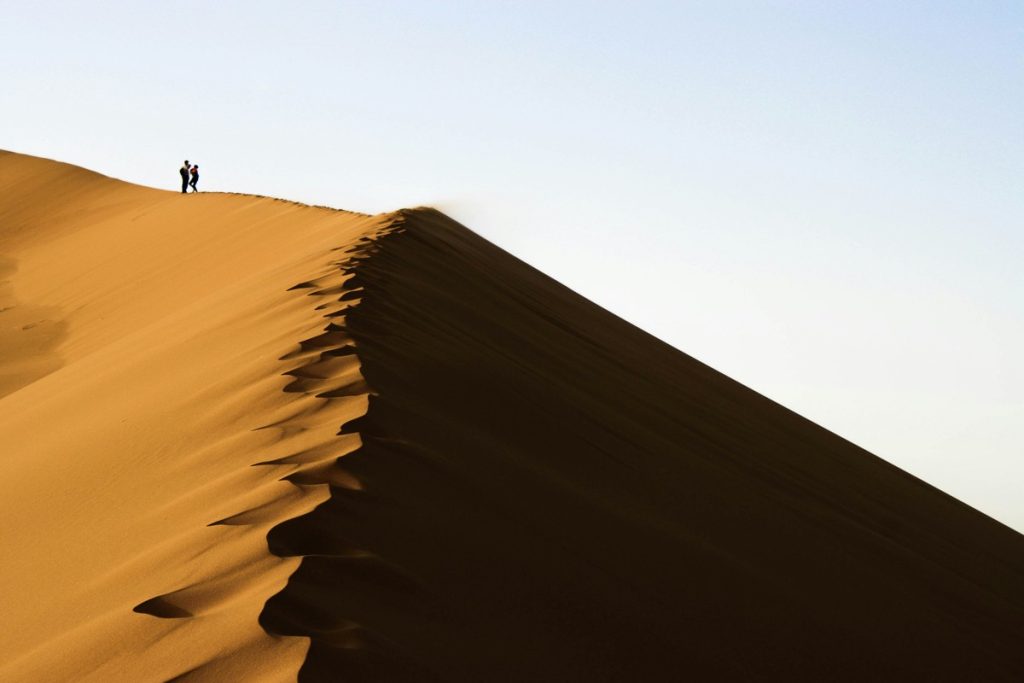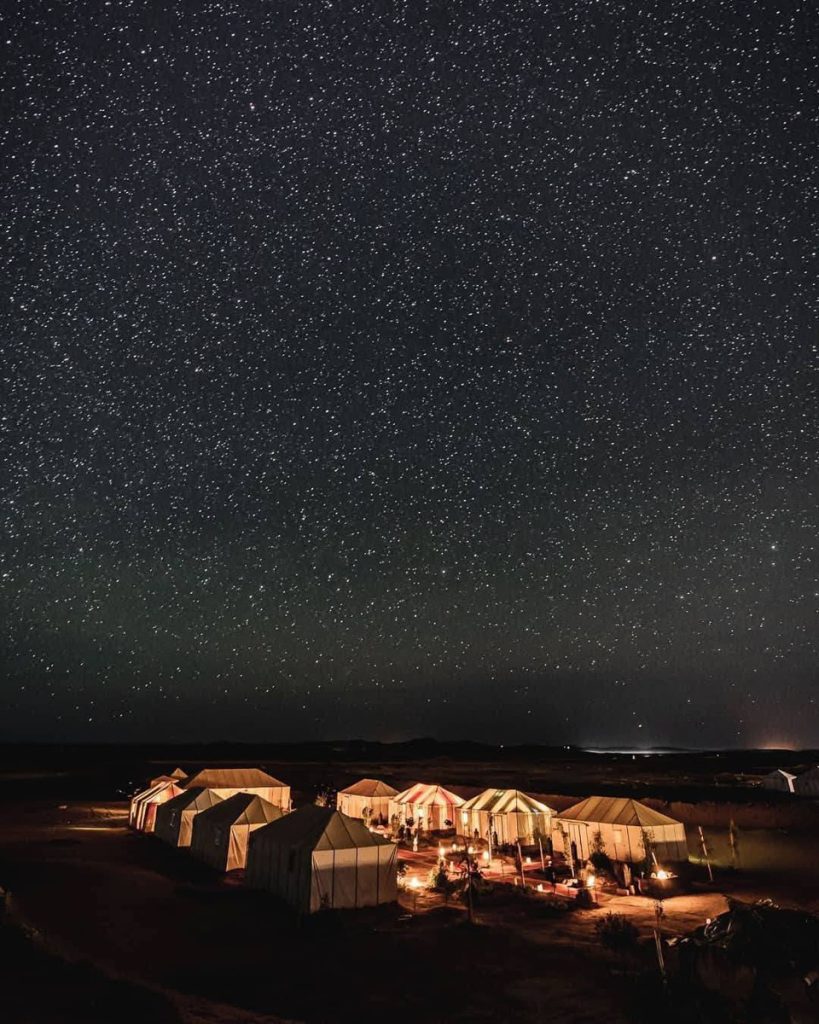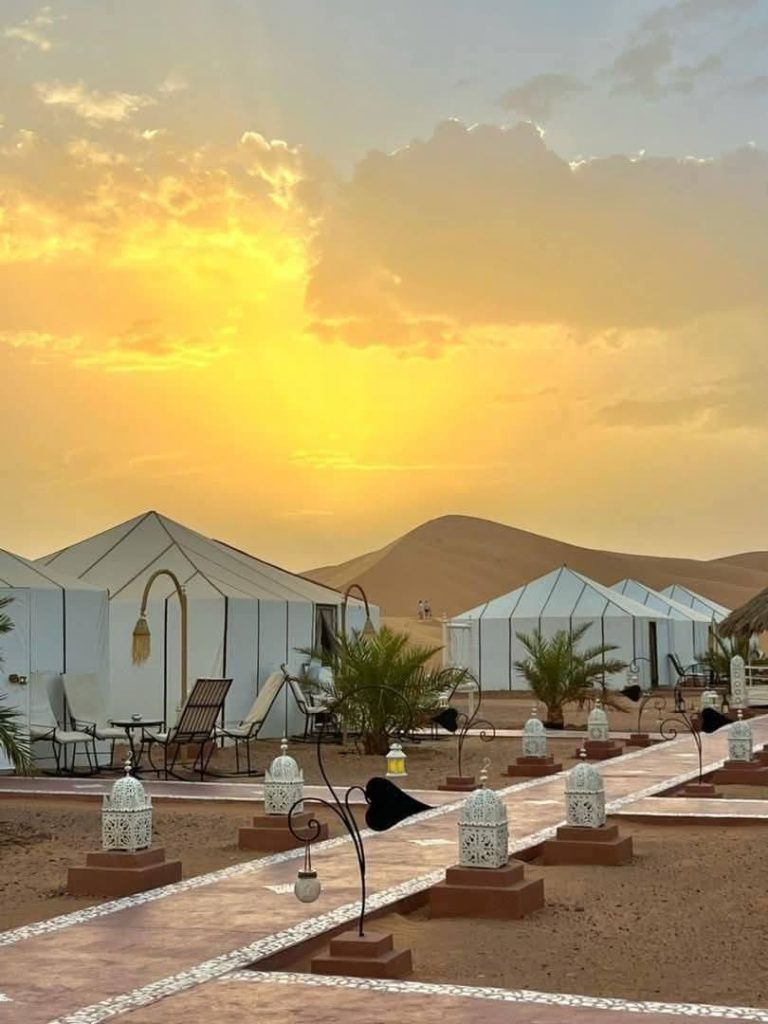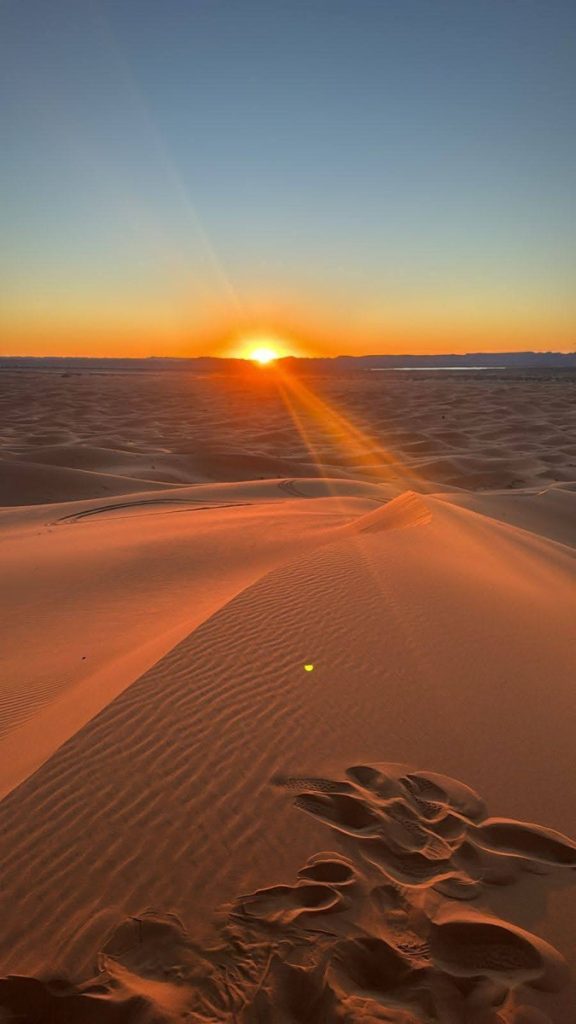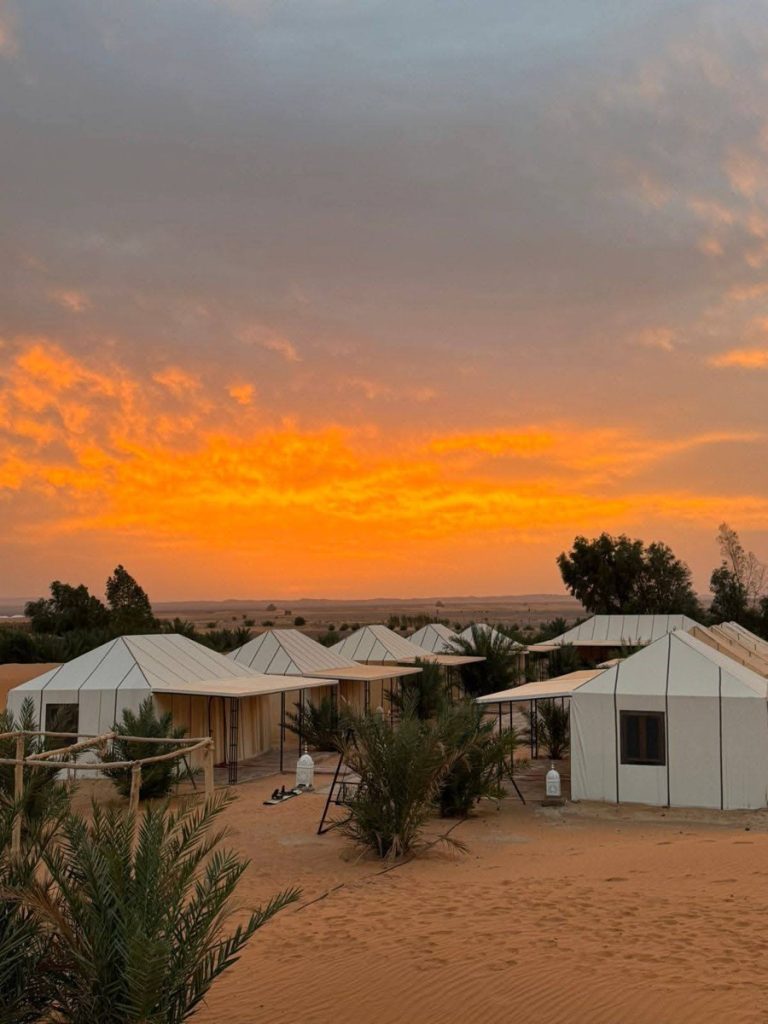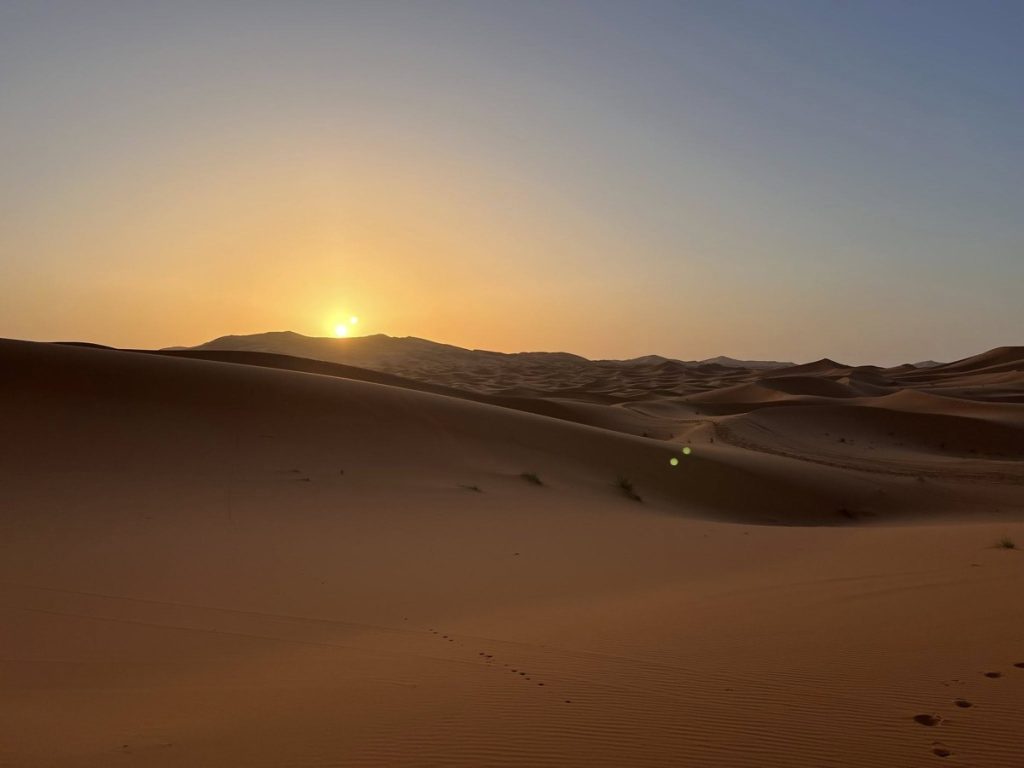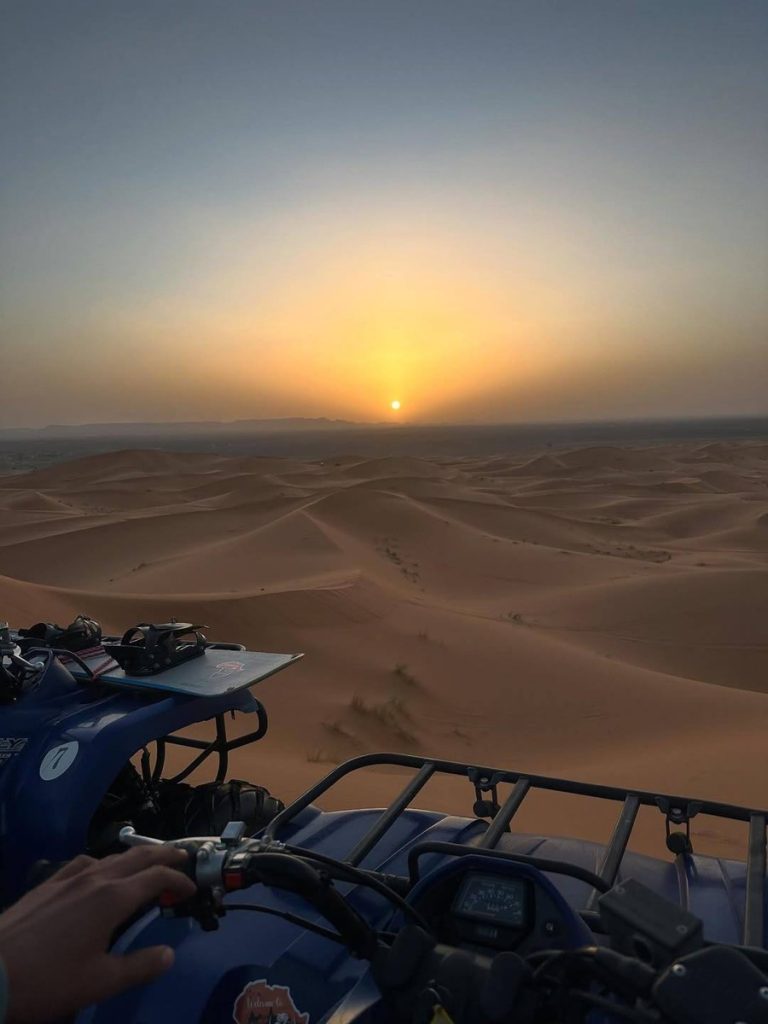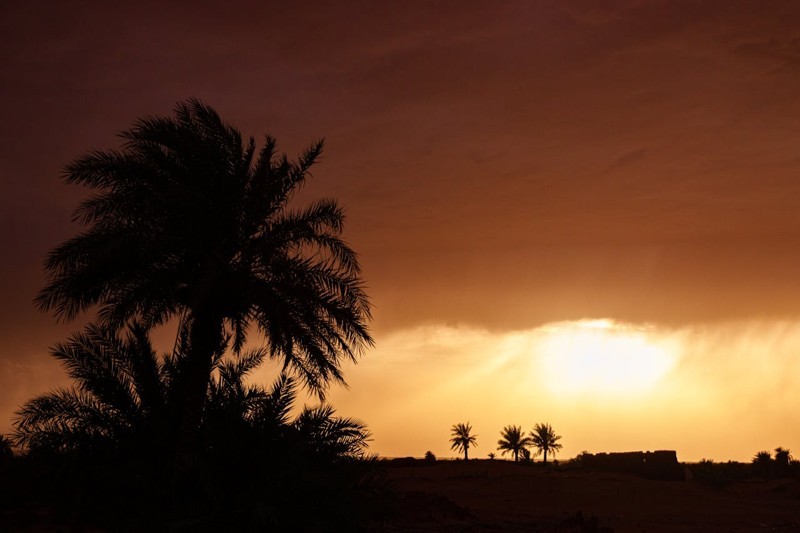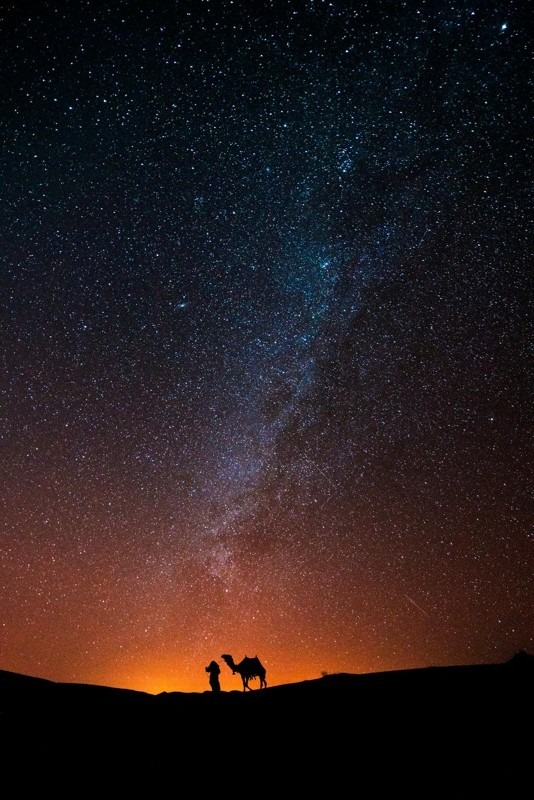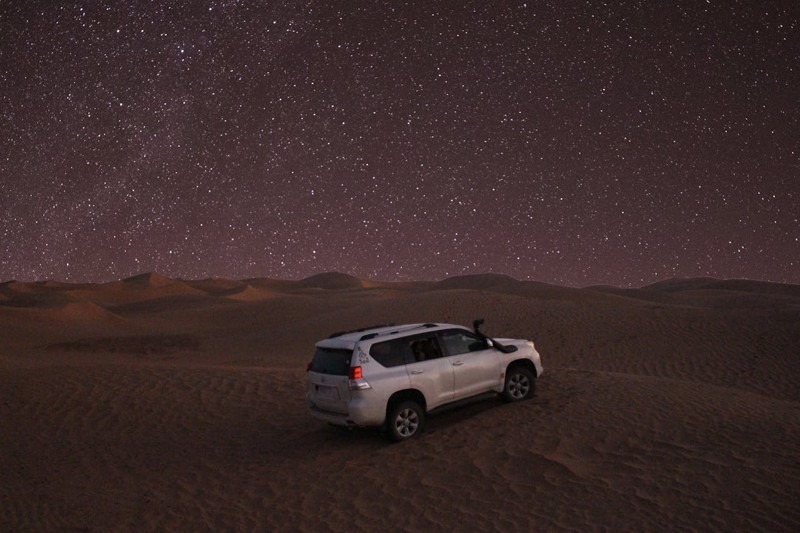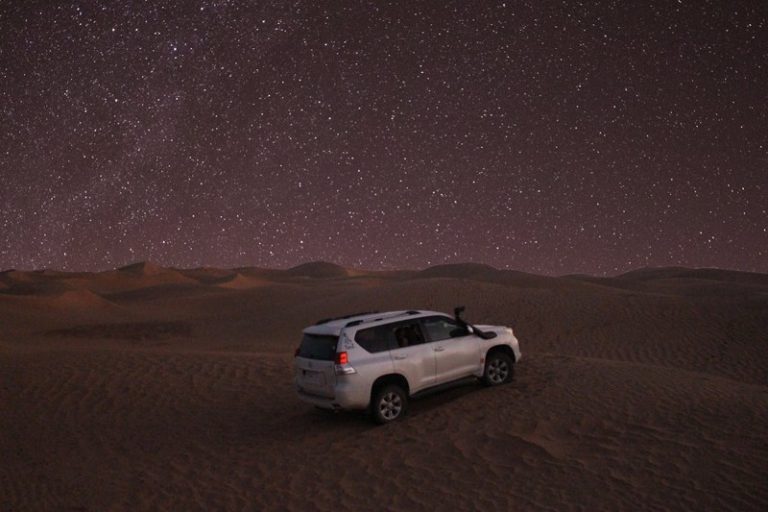Sandboarding in the Sahara Desert: My Wild Adventure
Sandboarding in the Sahara Desert wasn’t something I’d planned meticulously. Truth be told, I didn’t even know it was a thing until I found myself standing at the edge of Merzouga, staring at the endless golden waves of Erg Chebbi stretching toward the horizon. But there I was—turban wrapped tight around my head, sandboard tucked under my arm, about to hurl myself down what looked like a mountain made entirely of silk.
The thing about the Sahara is that it doesn’t announce itself quietly. One moment you’re driving through the last whispers of civilization, passing roadside stalls selling camel milk and dates, and the next—nothing. Just sand. The sand stretches for miles, undulating like a frozen ocean beneath the relentless North African sun. And somewhere in that vastness, between the whispers of Berber legends and the crunch of sand beneath worn leather sandals, lies one of Morocco’s most exhilarating experiences.
The Journey to the Edge of Everywhere
The journey to Merzouga challenges your faith in modern conveniences. I’d left the riad in Marrakech early that morning, my stomach full of msemen and mint tea, completely unprepared for what awaited. By the time we reached the last proper town before the desert—a dusty collection of buildings that seemed to exist solely to remind travelers they were about to leave everything familiar behind—I was already enchanted.
We stopped for lunch at a tiny restaurant where the owner knew my guide, Rashid, by name (because in Morocco, everyone knows everyone, or at least they act like they do). I ordered a Berber omelette cooked slowly in a traditional tajine, watching as the eggs bubbled and set among tomatoes, onions, and spices I couldn’t name. Rashid went for brochettes—chicken threaded onto sticks and grilled until the skin crackled. Simple food, but the kind that tastes like home even when you’re thousands of miles from your own.
“This is where I’m from,” Rashid said, gesturing vaguely at the town around us. “Well, close enough. My family, they’re nomads—out there.” He pointed toward the emptiness beyond. “No post office for them, no street address. Just… dessert.”
I loved that—the idea that some people still lived beyond the reach of Google Maps and Amazon deliveries. It felt wonderfully, terrifyingly free.
First Glimpses of the Golden Sea
The transition from road to sand happens gradually, then all at once. One moment, you are traversing cracked asphalt; the next, you discover yourself bouncing along a scarcely visible trail; and then—there is nothing. Your vehicle cuts through powder-soft sand, leaving temporary tracks that the wind will erase by nightfall.
My first proper view of Erg Chebbi wasn’t gentle rolling hills—they were giants, towering dunes that reached heights of up to 150 meters, their ridges sharp as knives against the bleeding blue sky. The color was impossible to capture (though God knows I tried, clicking my camera until the battery protested)—not quite orange, not quite gold, but something in between that shifted with every passing cloud.
We drove for an hour and a half in what felt like the heart of nothing and everything. The dunes rose around us like the walls of some ancient, windswept cathedral. I kept expecting to see… something. Another vehicle, maybe, or a distant building. But there was only sand and sky, and silence was so profound that it had weight.
“Camp is over that dune,” Rashid announced, bringing our 4×4 to a stop at the base of a particularly intimidating slope.
I looked up. And up. “That one?”
He grinned. “That one.”
Preparing for the Plunge
Before attempting sandboarding on the massive dunes near Merzouga, there’s the small matter of the turban—or as the locals call it, the cheche. Mine was wound around my head with surprising efficiency by one of the camp staff, a young Berber man whose hands moved so quickly I couldn’t follow the pattern. The turban, while tight enough to cause slight dizziness, was also sufficiently loose to allow for easy breathing.
“This,” he said, patting my wrapped head with satisfaction, “keeps the sand out. Everywhere.”
He wasn’t wrong. The Sahara has a way of infiltrating everything—your clothes, your bags, your ears (especially your ears). Without proper head covering, you’ll be finding grains of sand in places you didn’t know sand could reach for weeks afterward. The turban isn’t just decorative—it’s survival equipment disguised as fashion.
The sandboards themselves were simpler than I expected—basically snowboards without bindings, their undersides waxed smooth to glide over the fine Sahara sand. No fancy straps, no complicated equipment. You stood on them, you pointed them downhill, and gravity did the rest. In theory.
The View From the Top (And Why Getting There Nearly Killed Me)
Here’s what nobody tells you about sandboarding in Morocco: the worst part isn’t the boarding itself—it’s the climb. There’s no ski lift in the Sahara, no convenient cable car to whisk you back to the summit. It’s just you, your progressively heavier legs, and roughly seven thousand tons of shifting and sliding sand beneath each stride.
I made it about halfway up the first dune before seriously reconsidering my life choices. The sand was hot through my sandals—not burning, but uncomfortably warm, like touching a mug of tea that’s been sitting just slightly too long. Each step forward resulted in a half-step backward as the sand gave way. Rashid, annoyingly, was already at the top, barely winded.
But then I crested that ridge, and—
Oh.
Standing atop a Sahara dune during golden hour is a sight that elucidates the inspiration behind poetry. Rolling waves of sand stretched in every direction, their shadows growing longer as the sun dropped toward the horizon. The colors shifted from gold to amber to something approaching copper. In the distance, I could see our camp—white canvas tents arranged in a semicircle, looking impossibly small and fragile against the vastness.
It was worth every burning step.
The Rush: Sandboarding Down Erg Chebbi
I’d tried sandboarding once before, in Colorado. That endeavor culminated in me executing a spectacular somersault down a dune, while my friends recorded every mortifying moment on video. This time, I was determined to maintain at least a shred of dignity.
The key to successful Sahara Desert sandboarding, I discovered, is commitment. Hesitation results in stagnation—the sand is fine and loose, and without sustained momentum, you will inevitably come to a halt. Even though it might seem safe, doing so usually leads to an ungainly stop that topples you like a fallen tree.
My first run was tentative. I pointed the board downhill, shifted my weight forward, and—whoosh. The sensation was unlike anything else. The sensation was not as swift as snowboarding, nor as smooth, but it was somehow more primal. The sand whispered beneath the board, and the wind caught my turban, and for about fifteen glorious seconds, I was flying.
The landing was less graceful—I ran out of momentum about halfway down and stepped off awkwardly, laughing despite myself. But I’d stayed upright. That felt like a victory.
By the third run, I’d found my rhythm. Lean forward, keep your weight centered, and let the dune do the work. The board carved smoothly through the sand, leaving a serpentine trail behind me. The evening sun painted everything golden—the dunes, my hands, and the very air seemed to glow.
Sunset and Stars: The Sahara After Dark
As the sun began its final descent, we made one last run. There’s something magical about sandboarding at sunset—the way the shadows stretch across the dunes and how the temperature drops just enough to feel pleasant rather than punishing. The sky turned from blue to pink to deep purple, and one by one, stars began appearing overhead.
Walking back to camp—another exhausting trudge up and over the dunes—I felt pleasantly worn out. My legs ached, my turban had come slightly unwound, and I had sand in places I didn’t want to contemplate. But I was grinning like an idiot.
The camp itself was better than I’d dared hope. Traditional Berber tents made from thick camel wool, arranged around a central fire pit. Inside my tent: actual mattresses (on sand, granted, but still), thick blankets, and lanterns casting warm shadows on the canvas walls. The floor was squishy beneath my feet—just canvas laid over sand—creating this strange sensation of sleeping on something solid yet yielding.
I’d worried about feeling exposed and vulnerable in the middle of such emptiness. Instead, I felt held—cradled by the dunes like a small boat on a vast ocean.
A Night to Remember
Dinner was chicken tajine—vegetables and fall-off-the-bone meat cooked slowly with preserved lemons and olives. We ate with our hands, tearing off chunks of warm khobz to scoop up the sauce. I’d had tajine several times since arriving in Morocco, but this one—cooked over an open fire in the middle of the desert—tasted different. Better. The spices seemed to absorb the essence of the location itself.
Afterward, we sat around the fire drinking sweet mint tea (always mint tea—the national drink seems to be consumed at all hours) while our Berber hosts played music. One possessed a drum, another a type of lute, and they performed songs in Tamazight that I could not understand, yet I felt them resonating within my chest regardless.
I don’t know how to describe the stars in the Sahara without sounding trite. But they’re… abundant. Overwhelming. In cities, you see stars as individual points of light—maybe a few dozen on a clear night. In the desert, you see layers—the bright stars, the dimmer ones behind them, and behind those, a gossamer veil of distant galaxies that looks like someone spilled milk across the sky. The Milky Way wasn’t a concept; it was a river of light arching overhead.
I sat there in an 80-year-old tent made from camel wool—the same type nomadic families have used for centuries—watching the cosmos wheel slowly above me and thought, I will never forget this. Perhaps I won’t remember the details, but I will remember the feeling. I felt simultaneously insignificant and exactly where I needed to be.
Practical Tips for Your Sandboarding Adventure
Here are some practical tips to help you plan your own sandboarding experience in Merzouga:
Getting There: Merzouga sits on the edge of Erg Chebbi, roughly 560 kilometers southeast of Fes. Most visitors arrive via organized tours from Marrakech or Fes, though you can drive yourself if you’re comfortable navigating Morocco’s roads. The journey takes about eight to ten hours depending on your starting point—long, but scenically rewarding.
Best Time to Visit: October through April offers the most pleasant temperatures. Summer in the Sahara is brutally hot—think 45-50°C (113-122°F) during the day. I visited in March, and the days were warm but not unbearable, while nights were cool enough to require layers. The temperature swings dramatically in the desert; bring clothing for both extremes.
What to Pack: Closed-toe shoes (sand gets hot), sunscreen (seriously—the sun reflects off the sand, hitting you from all angles), sunglasses, a hat or scarf for your head, and layers for evening. Sandboards are available at most campgrounds; however, you should verify with your tour operator first. A small backpack is useful for carrying water and your phone/camera during the trek to the dunes.
Physical Fitness: You don’t need to be an athlete, but reasonable fitness helps. The climbing—repeatedly hauling yourself up soft sand at altitude—is genuinely tiring. If you have knee or breathing issues, take it slow. Nobody’s timing you, and there’s no shame in taking breaks or attempting shorter dunes.
Photography: The light in the Sahara is unforgiving at midday but absolutely magical during golden hour. Shoot in the early morning or late afternoon for the best colors. Ensure your camera is shielded from sand using Ziploc bags, and prepare for your phone to overheat in the direct sun.
Choosing a Tour: Many businesses offer camping trips to the Sahara Desert from Merzouga. Do your homework: read recent reviews, learn what’s included (meals, bedding quality, private vs. shared tents), and don’t just go with the cheapest choice. In terms of comfort and food quality, the gap between a budget and a mid-range tour is frequently significant.
Beyond the Board: Other Desert Experiences
While sandboarding on the Sahara dunes was the highlight of my trip, Merzouga offers other experiences worth considering. Many tours include camel treks—yes, it’s touristy, but watching sunrise from camelback while crossing the dunes is admittedly spectacular. The camels walk with this swaying, rhythmic gait that’s oddly meditative once you stop worrying about falling off.
The nearby town of Merzouga itself is worth exploring. Small and dusty, it nonetheless has charm—traditional kasbahs, fossil workshops (the region is rich in fossils dating back millions of years), and carpet cooperatives where you can watch Berber women weaving intricate patterns. Don’t feel obligated to buy, but if you’re in the market for authentic Moroccan textiles, this is the place.
Some operators offer 4×4 desert excursions to meet nomadic families—genuine encounters, not staged performances. These need to be culturally aware and respectful, but they can give you fascinating views on a way of life that is quickly fading as younger people move to cities.
The Morning After
I woke to silence. Not the silence of night, but the peculiar quiet of the desert at dawn—no birds, no traffic, just wind whispering across the dunes. I unzipped my tent and stepped out into air so crisp it almost hurt to breathe.
The dunes had changed overnight. Wind had reshaped the surfaces, erasing our sandboarding tracks and creating new ripple patterns that caught the low morning light. It was like waking up to find someone had redecorated your entire neighborhood while you slept.
Breakfast was strong coffee, fresh bread, and various jams and spreads laid out on low tables. We ate slowly, reluctant to leave. A few brave souls climbed the nearest dune to watch the sunrise—I opted to enjoy it from ground level, nursing my coffee and feeling pleasantly sore from the previous day’s exertions.
Is Sandboarding in the Sahara Worth It?
My honest answer is yes, but not just for the sandboarding. The boarding is fun because it’s something you can’t do anywhere else. Riding down giant dunes in the middle of the world’s largest hot desert is definitely fascinating. But if you’re an experienced snowboarder looking for thrills, you may be disappointed.
What makes sandboarding in Erg Chebbi worthwhile is the total experience. It’s the journey into the desert, the shock of seeing those massive dunes for the first time, and the struggle up the slope that makes the descent sweeter. It’s the camp, the food, the music, and the stars. It’s sleeping on sand and waking to a landscape that’s been subtly rearranged overnight.
It’s the reminder that the world still contains places vast enough to make you feel properly small—and that feeling small isn’t always uncomfortable. Sometimes it’s exactly what you need.
Frequently Asked Questions About Sandboarding in the Sahara
Final Thoughts from the Dunes
I left the Sahara with sand still embedded in my backpack (I find grains occasionally, even months later—they’re like souvenirs I didn’t ask for). But I also left with something less tangible and more valuable: perspective. I realized that spectacular experiences don’t always necessitate extreme sports or luxurious accommodations. Occasionally they just require showing up, being present, and being willing to climb a massive hill for a fantastic view.
Sandboarding adventures aren’t just about the sport—they’re about pushing yourself slightly outside your comfort zone in a landscape that’s fundamentally different from anything most of us encounter daily. They’re about sitting around fires with strangers who become friends, about eating dinner under stars so bright they seem artificial, and about discovering that your legs are stronger and your lungs more capable than you believed.
If you find yourself in Morocco—in Marrakech, in Fes, or anywhere within striking distance of the southeast—make the journey to Merzouga. Book a tour, wrap a turban around your head, and point yourself downhill. The Sahara is waiting, vast and patient and utterly indifferent to whether you’re a good sandboarder or a terrible one.
And honestly? That indifference is part of its charm.
References:
Moroccan National Tourism Office—Official statistics on visitor numbers and desert tourism trends
UNESCO World Heritage Convention—Documentation on Sahara Desert ecosystems and cultural significance



